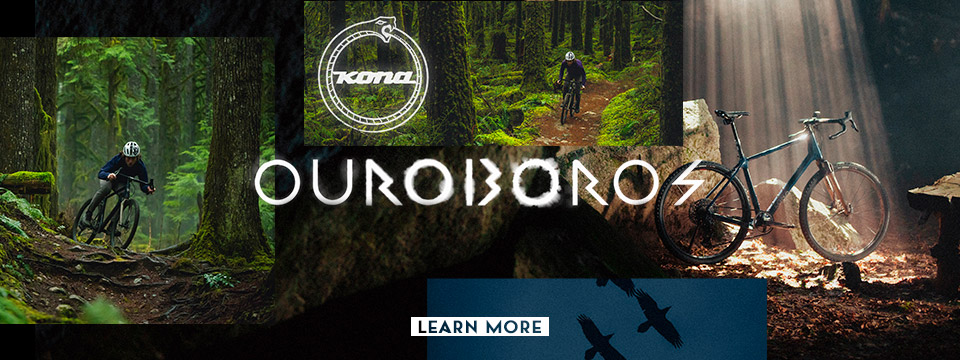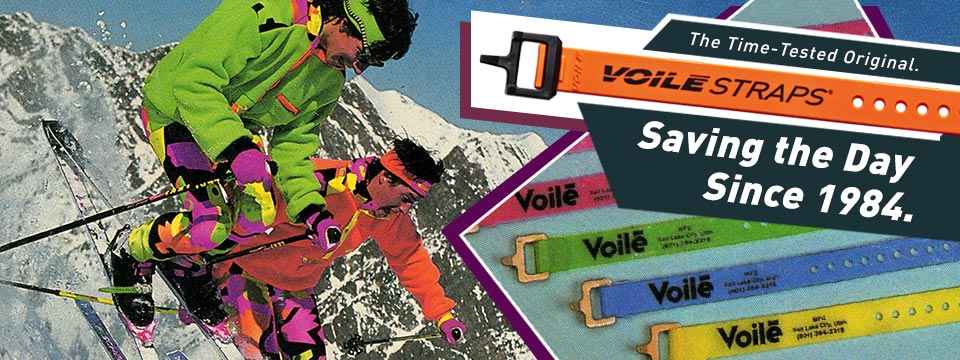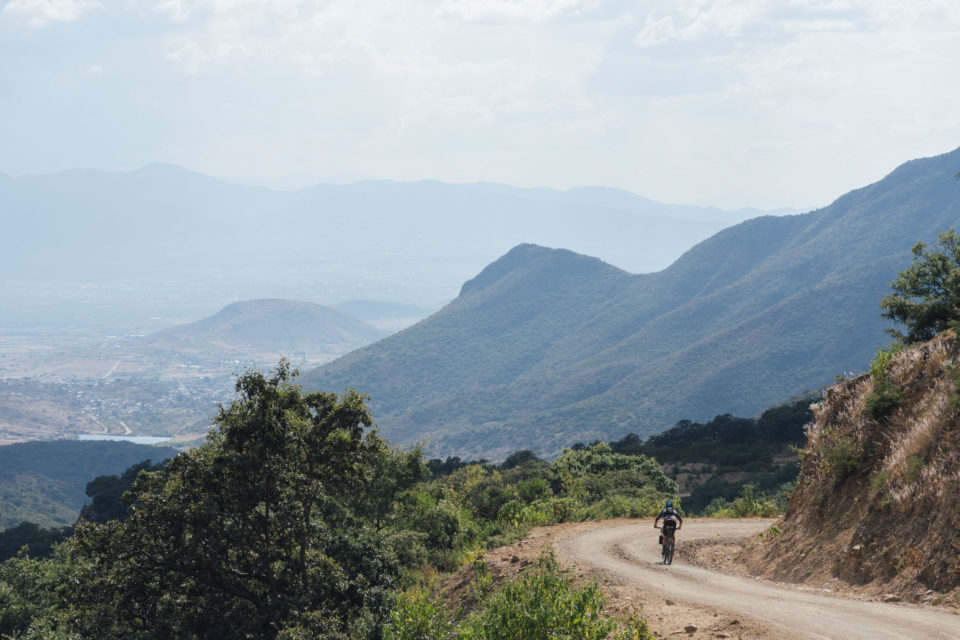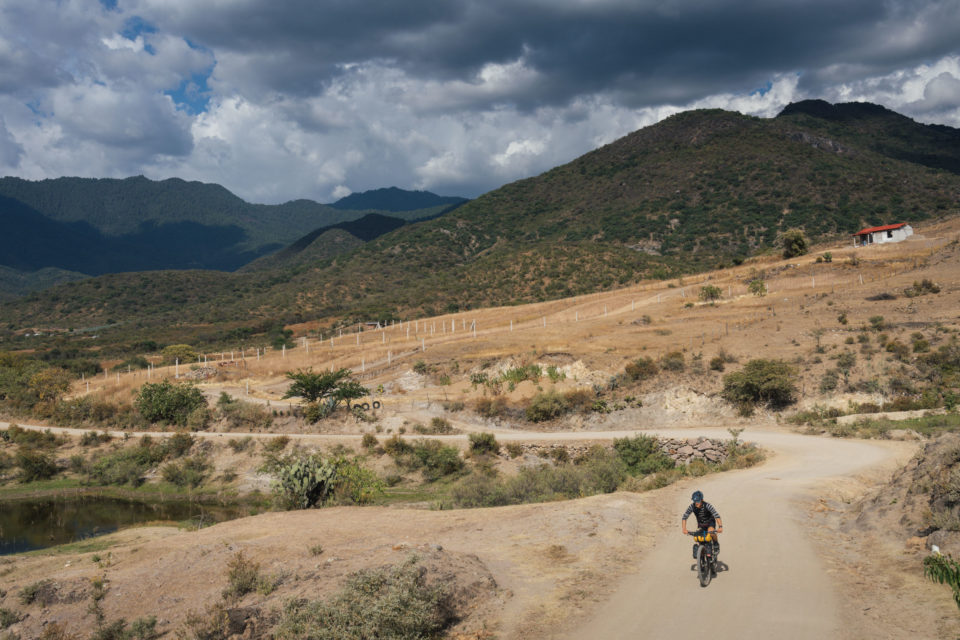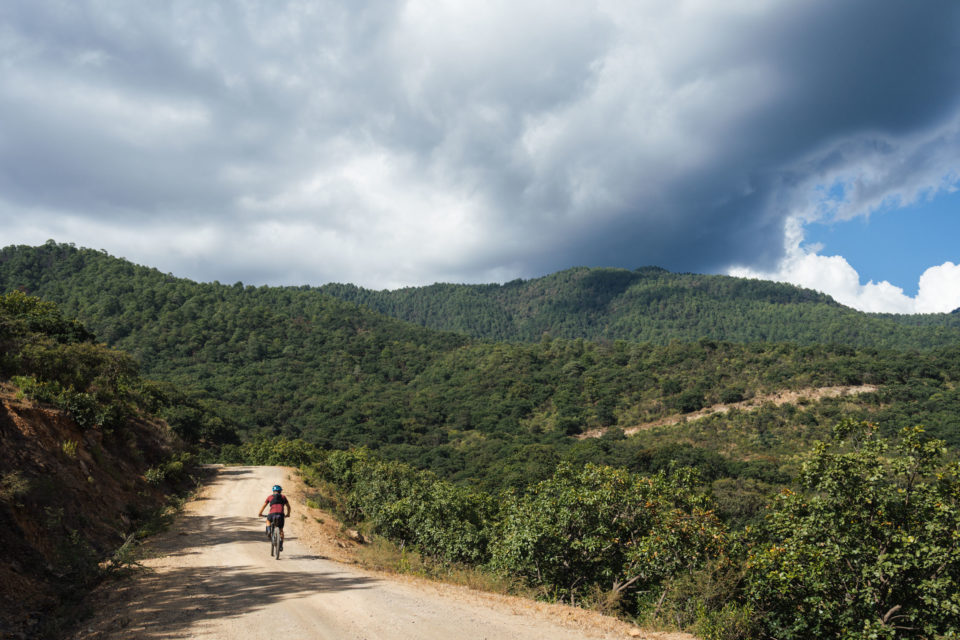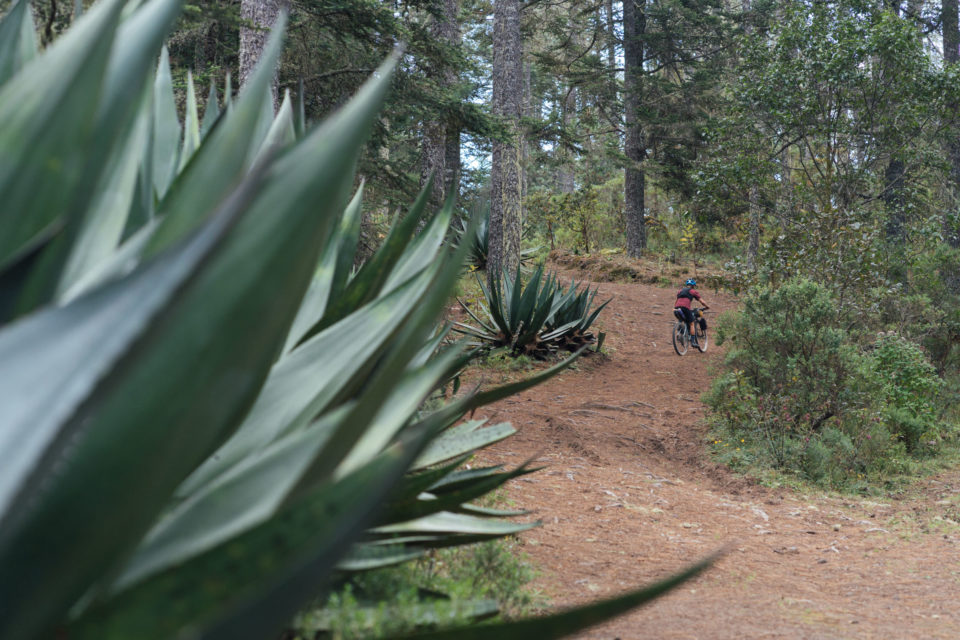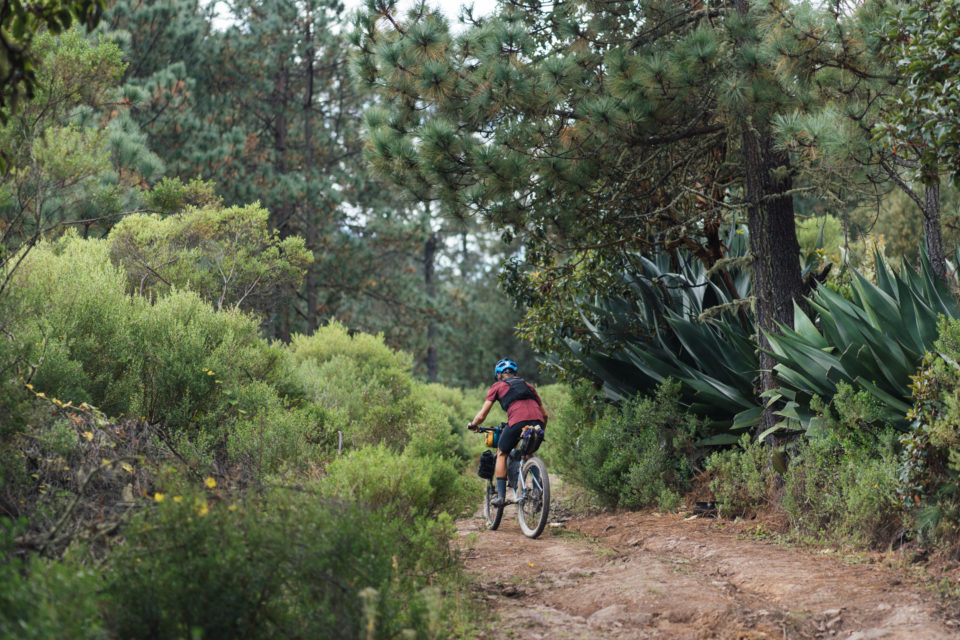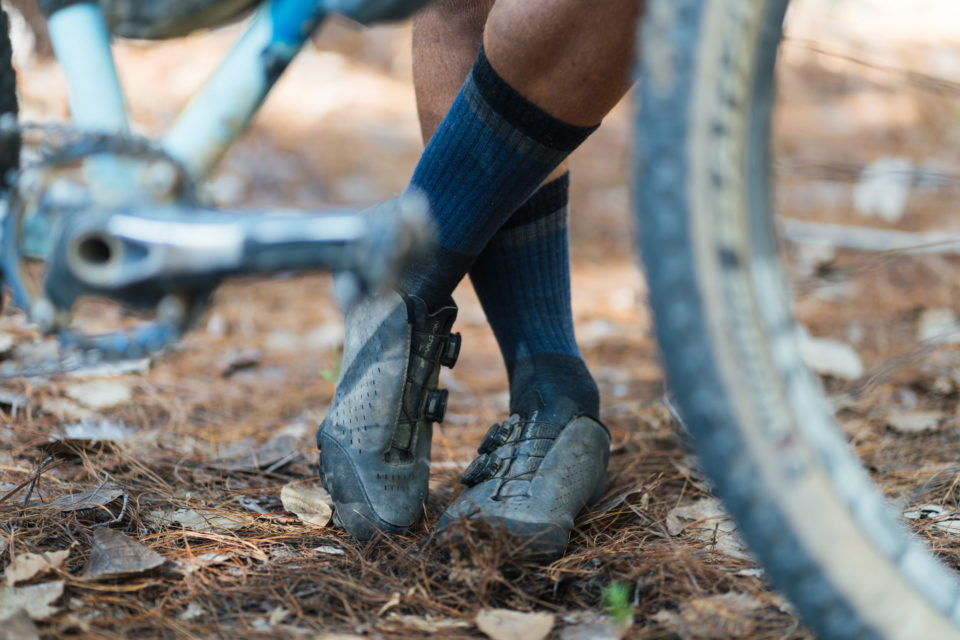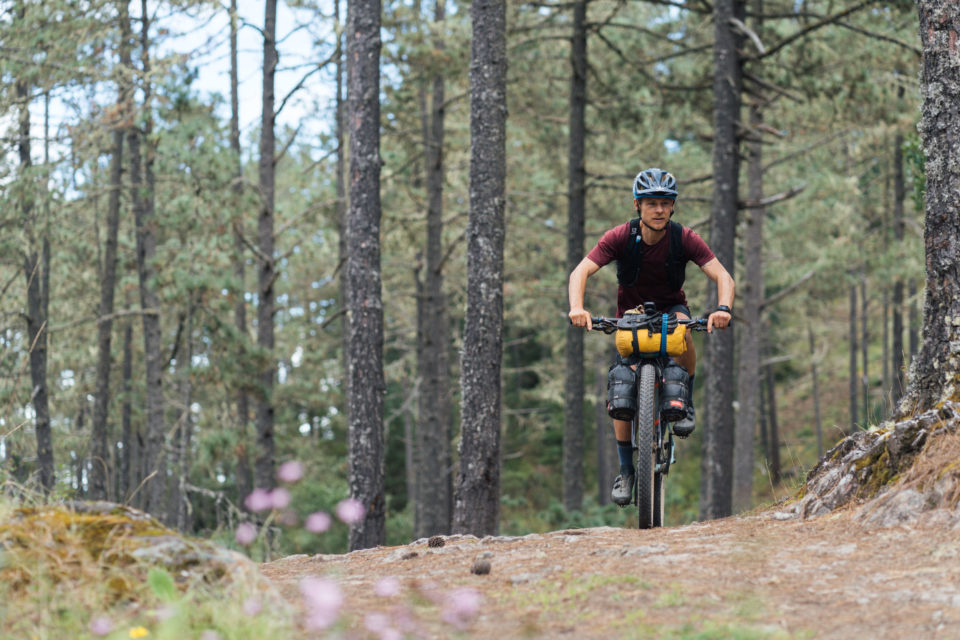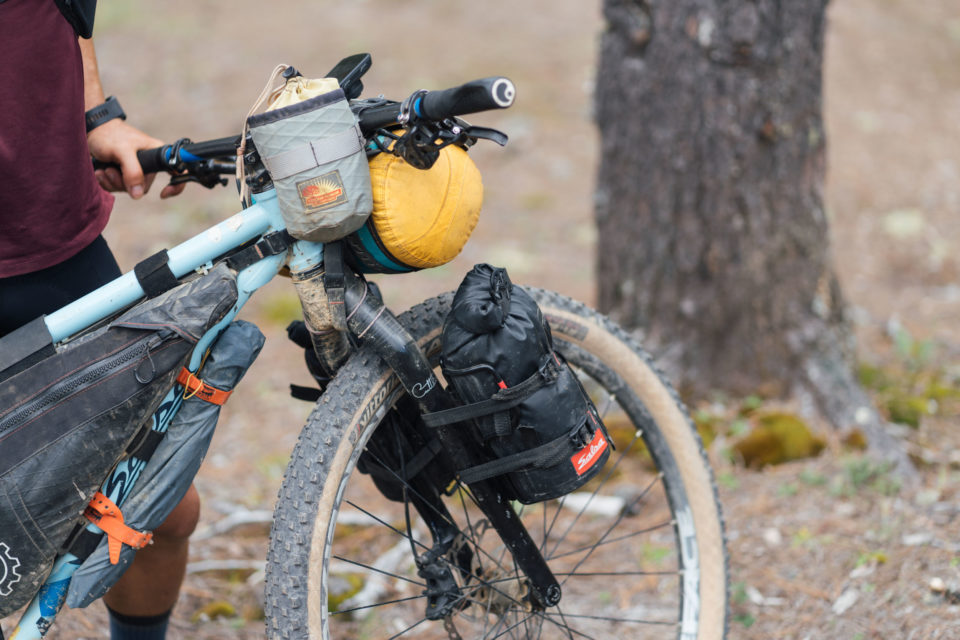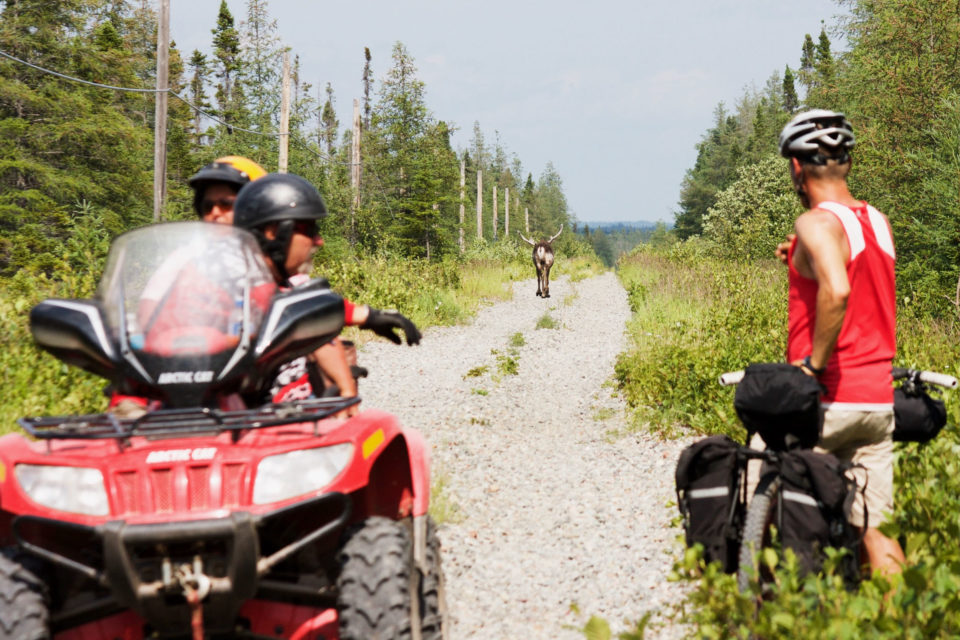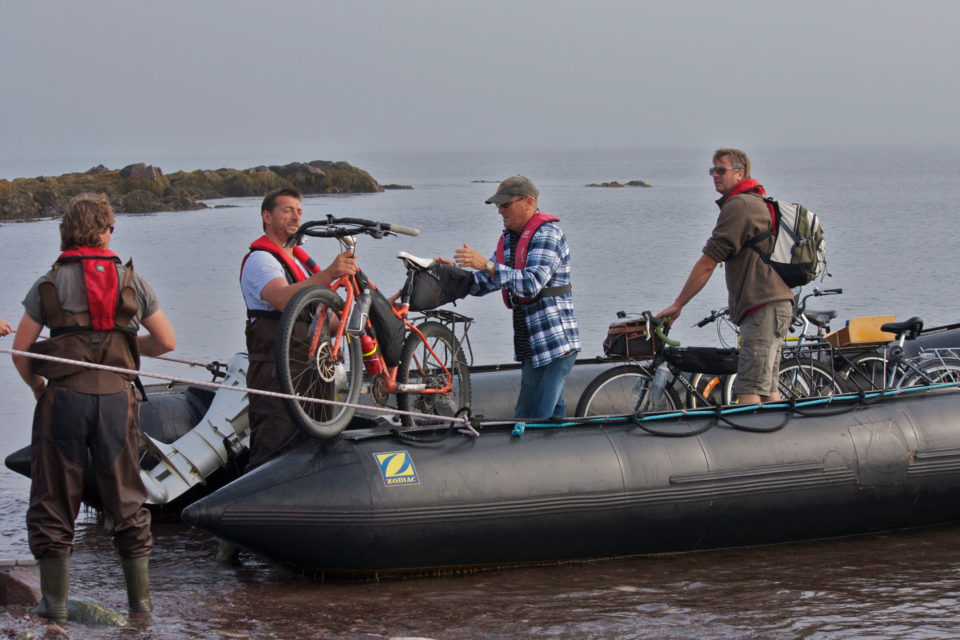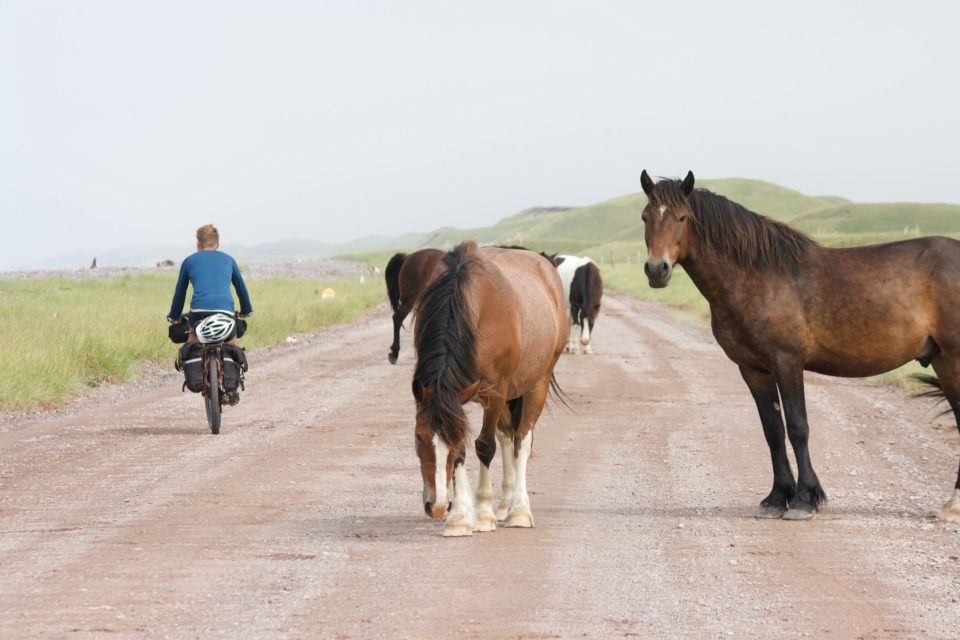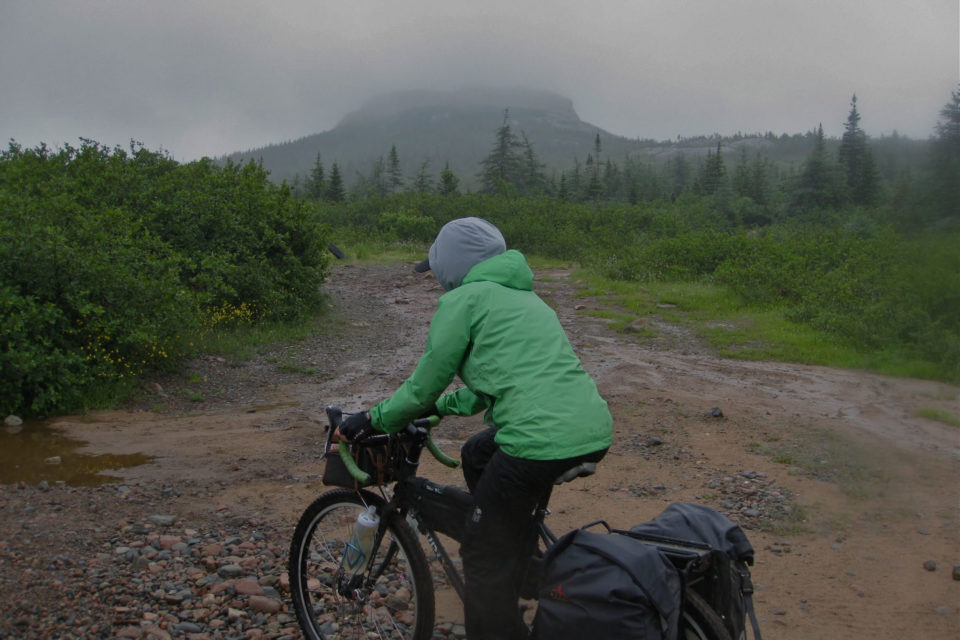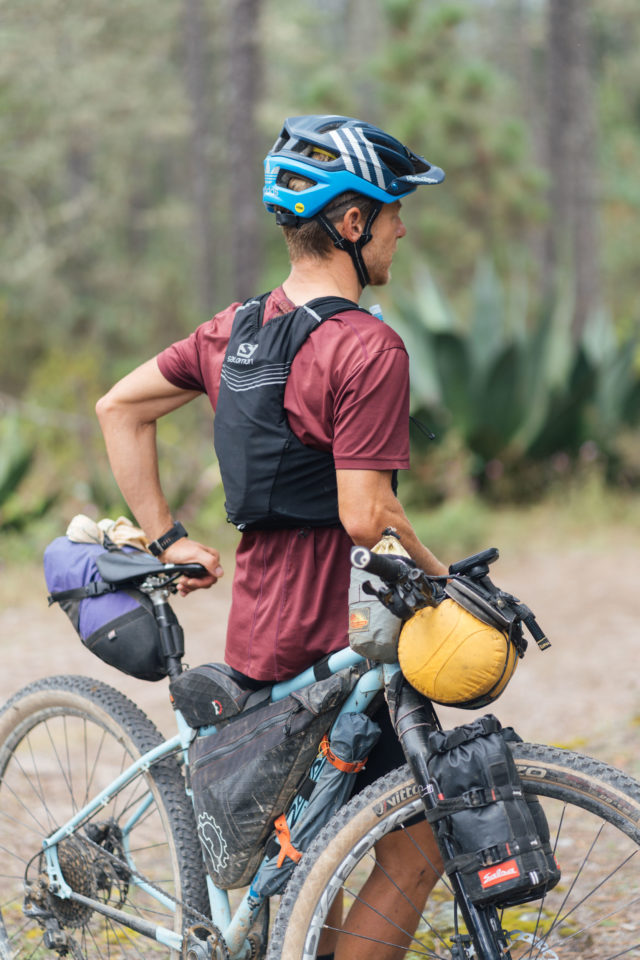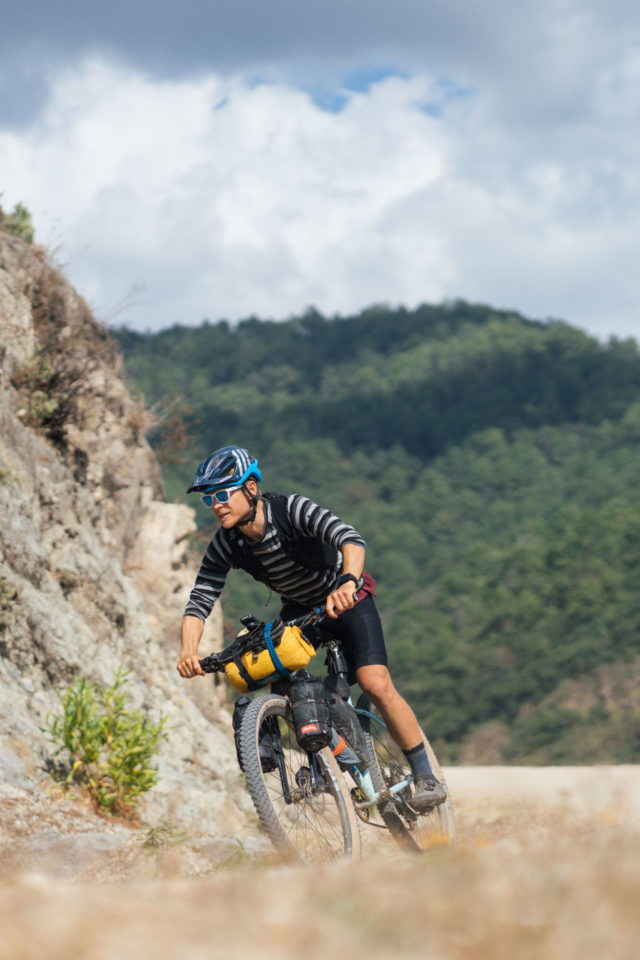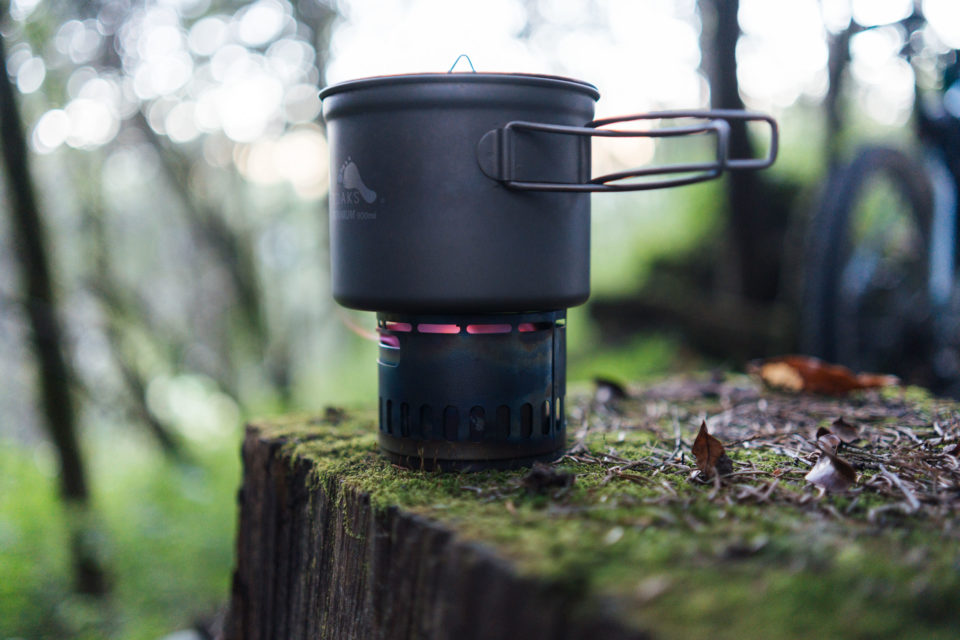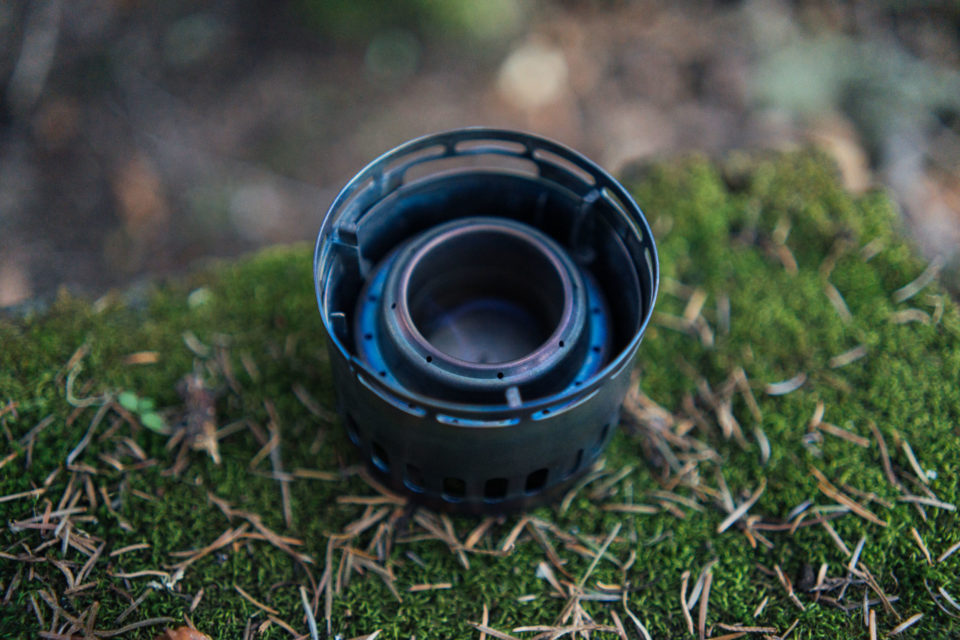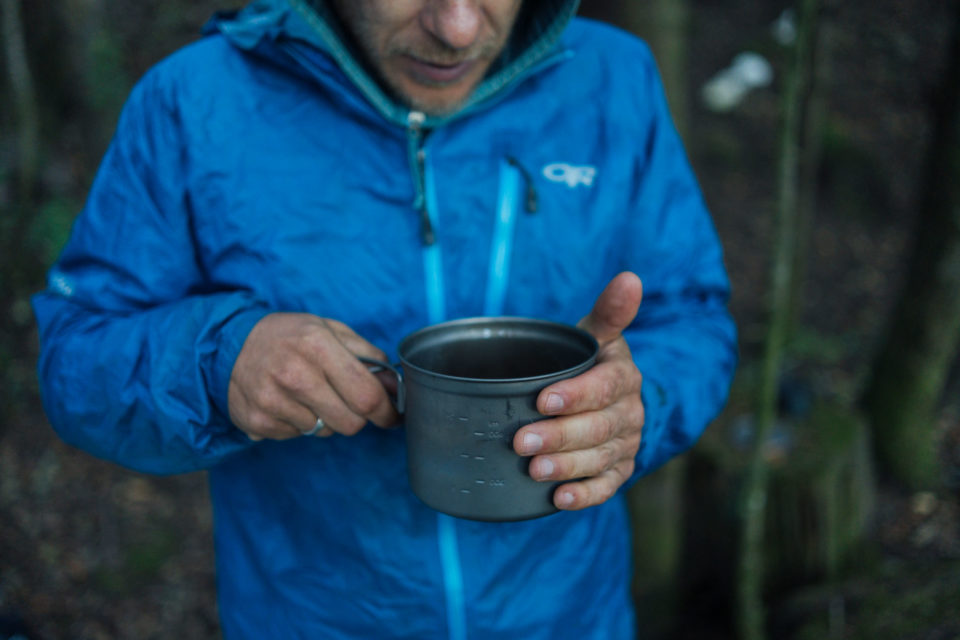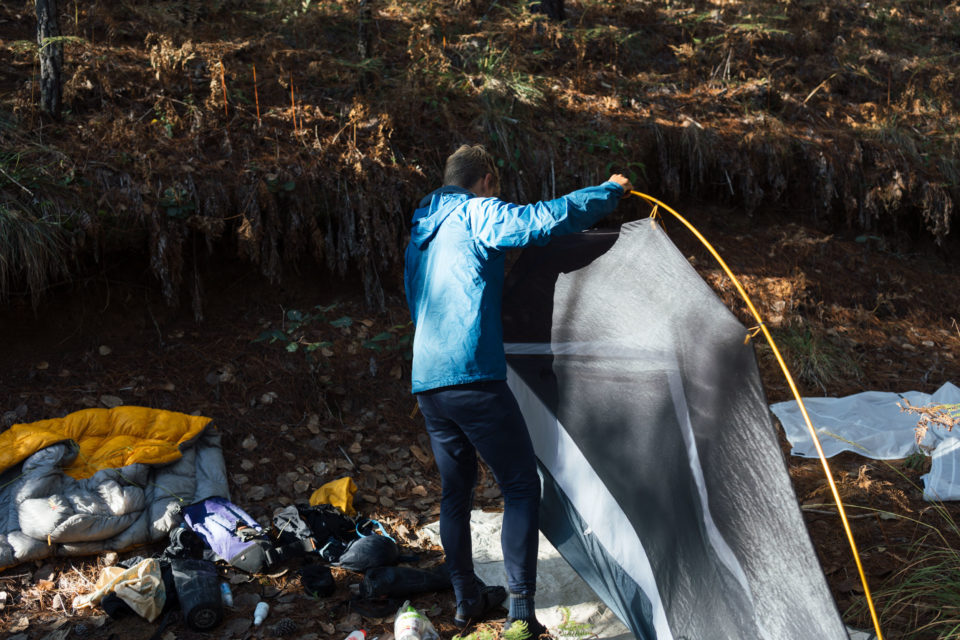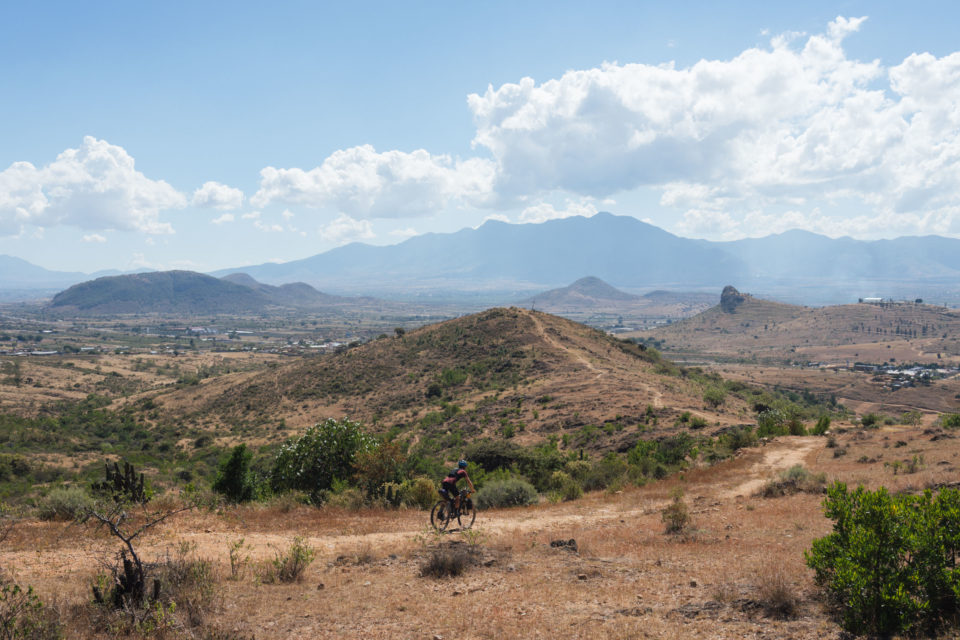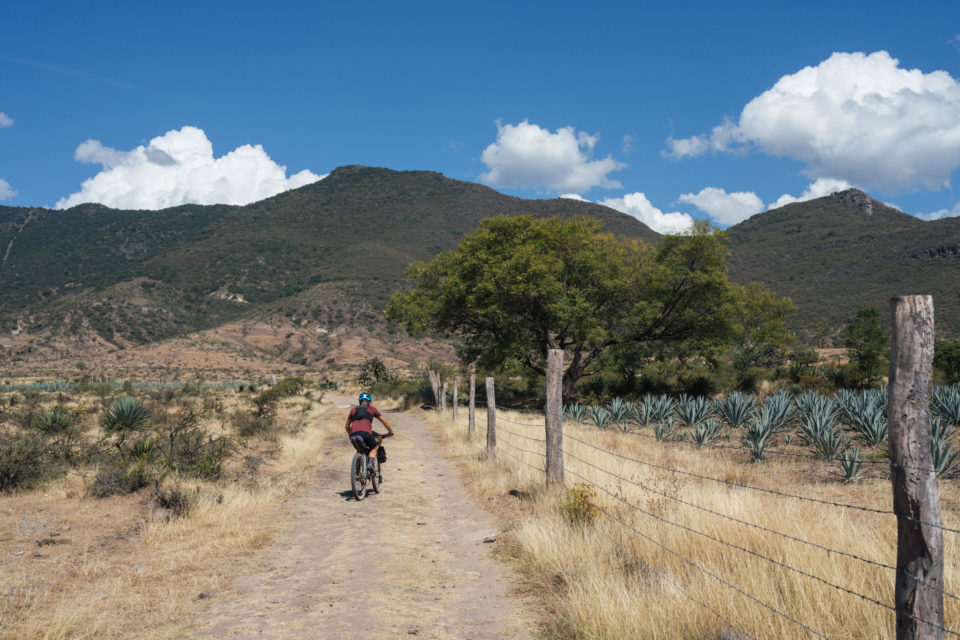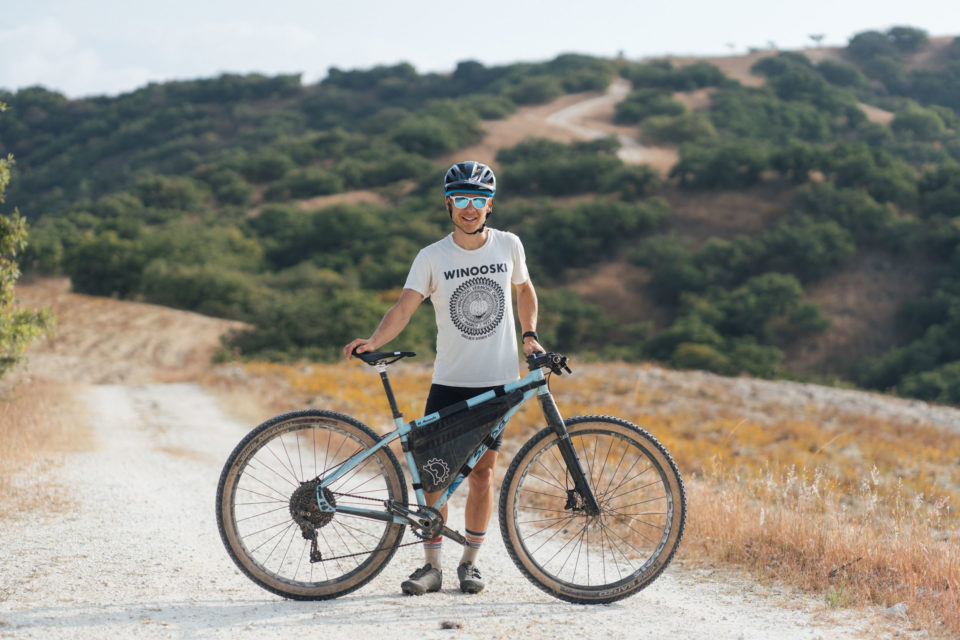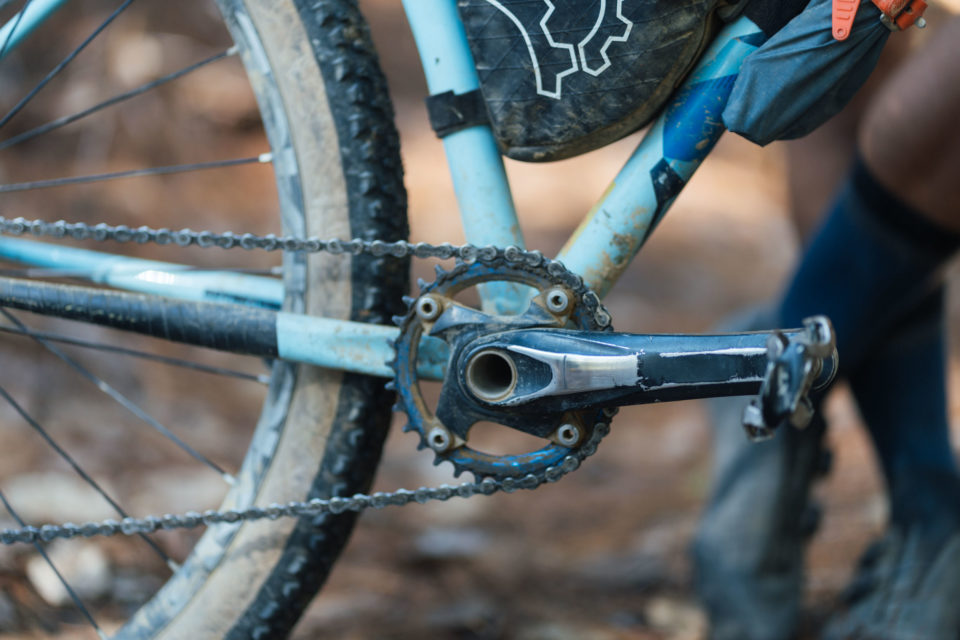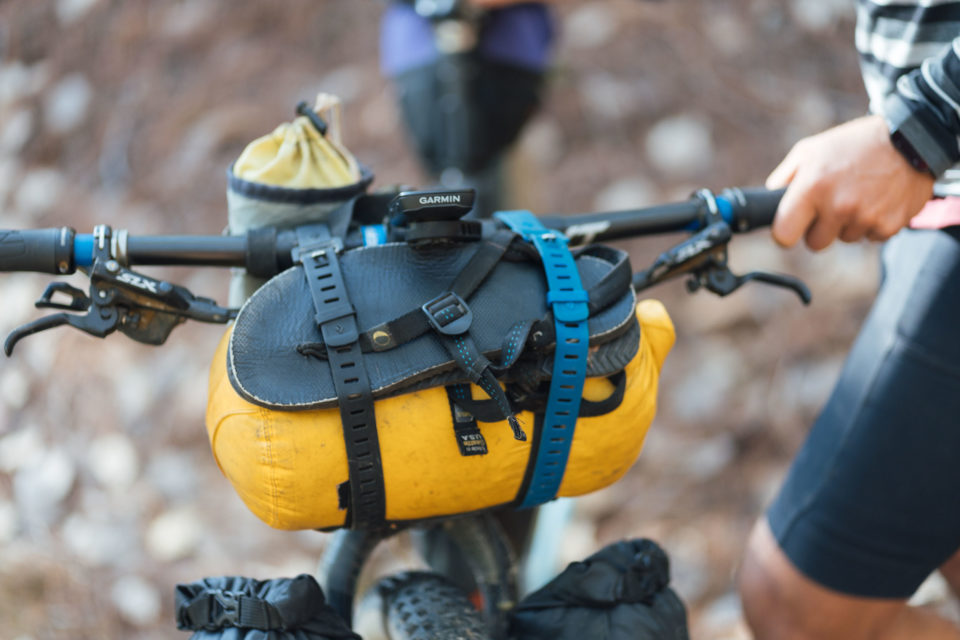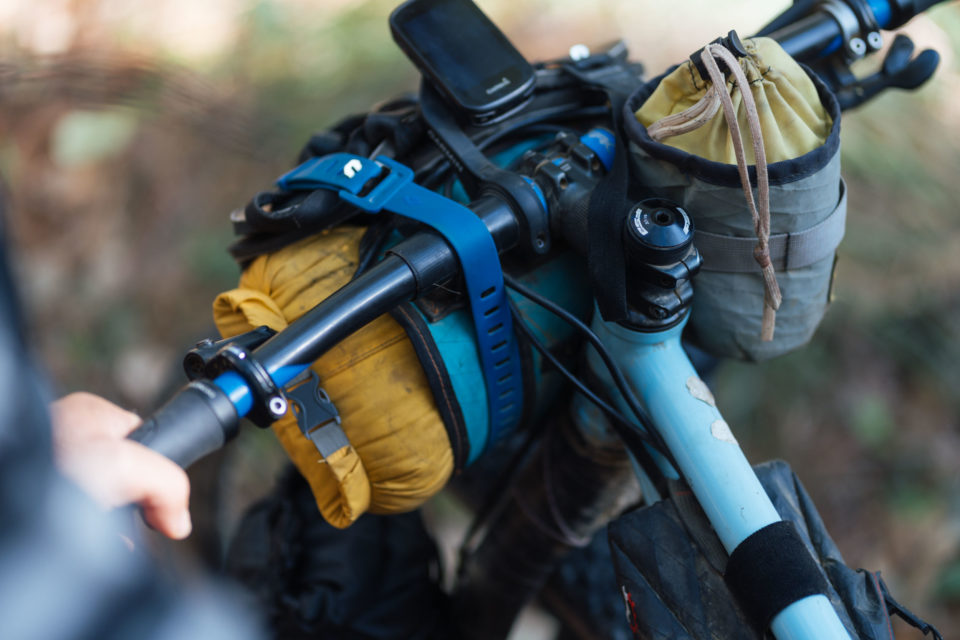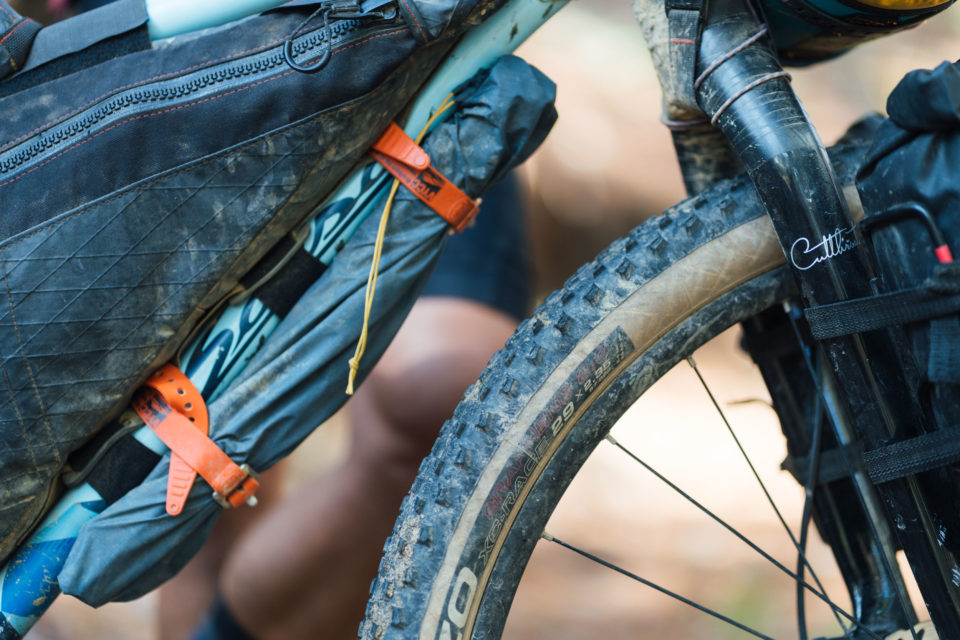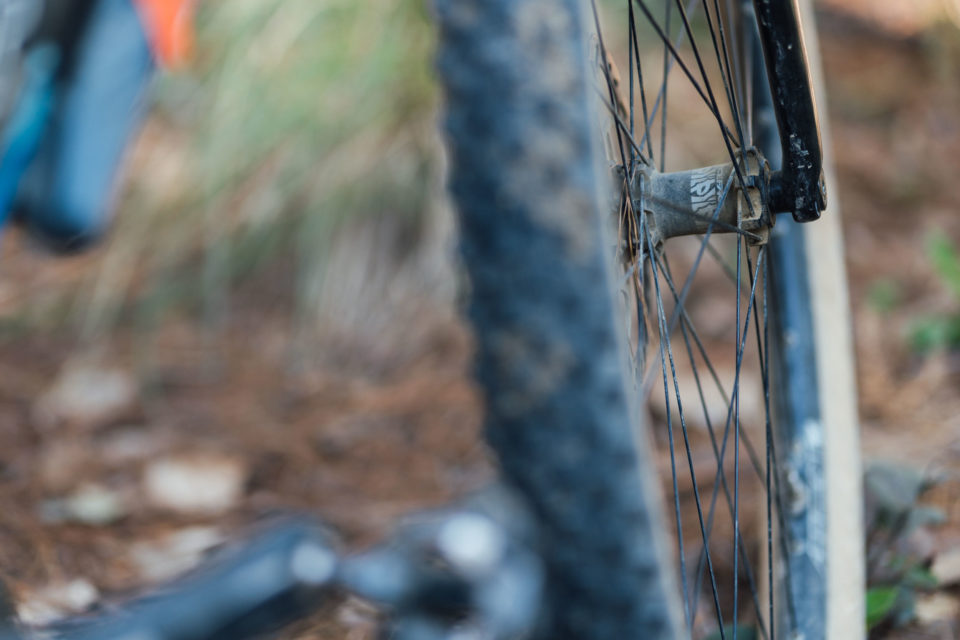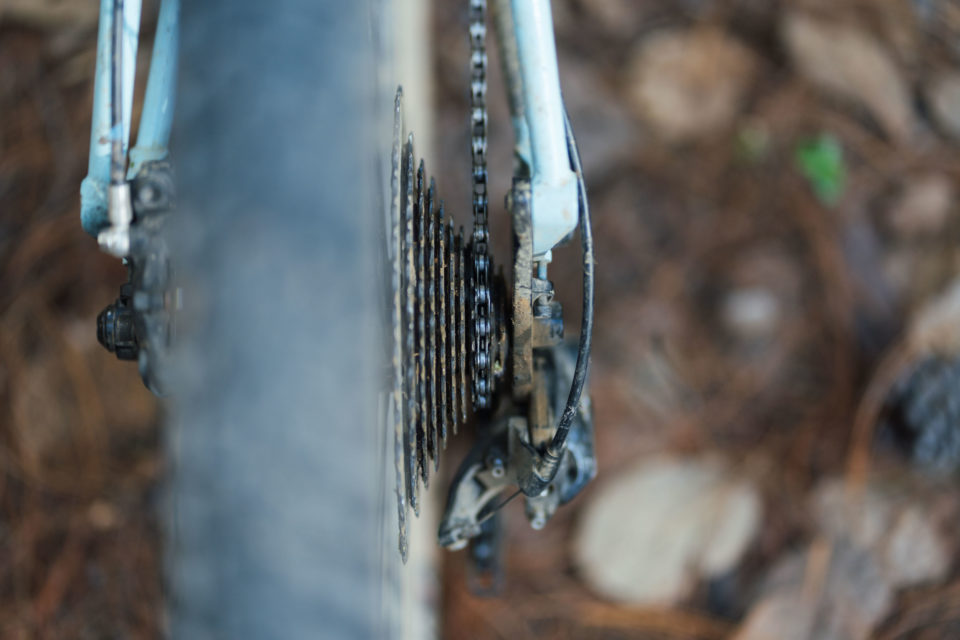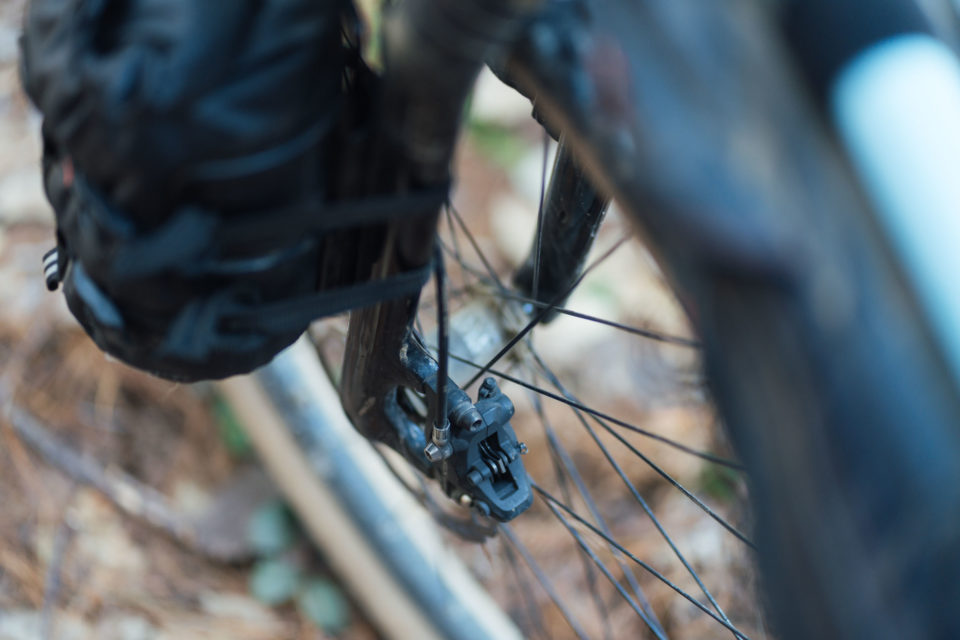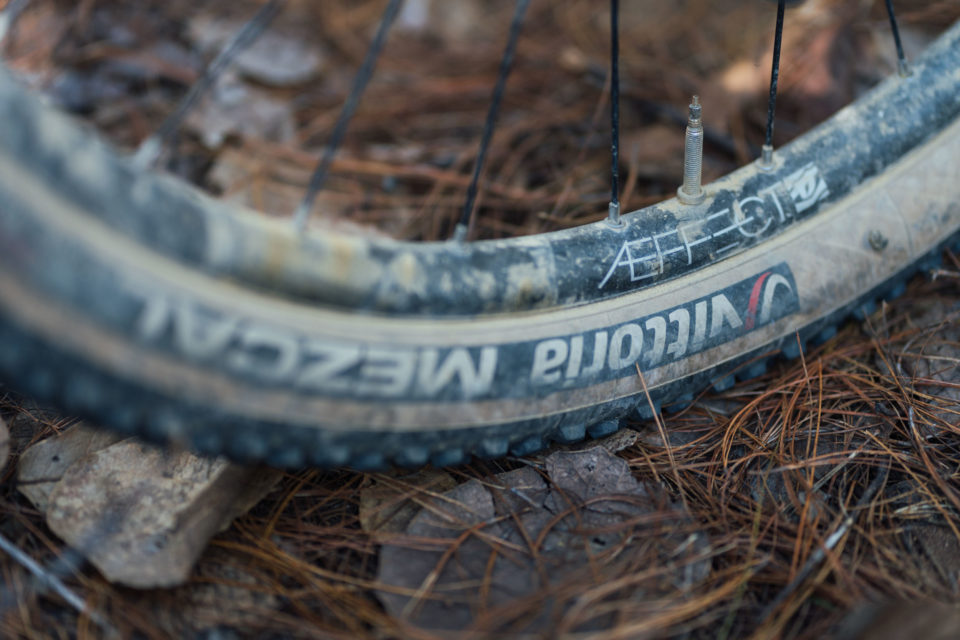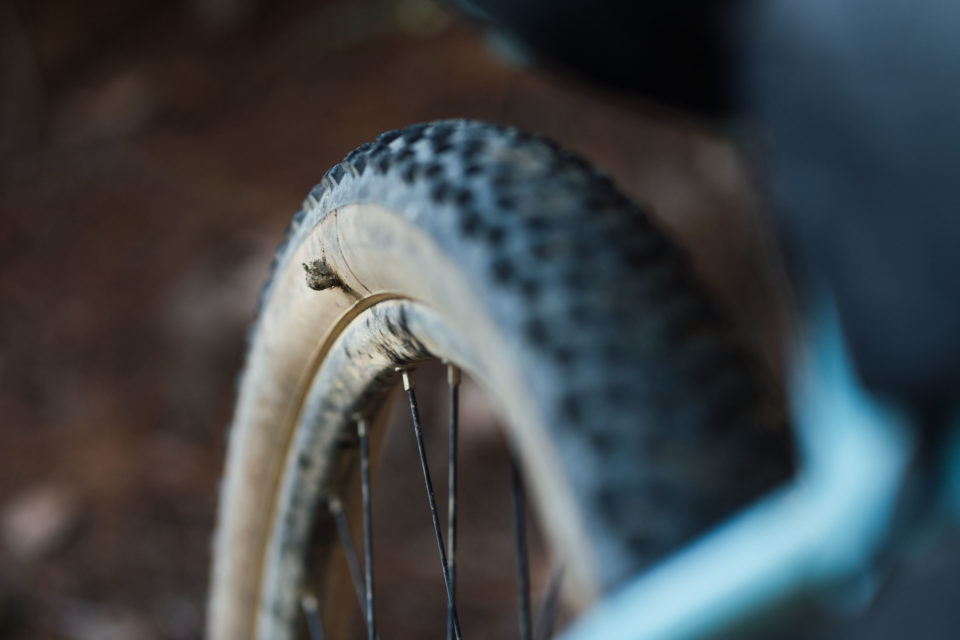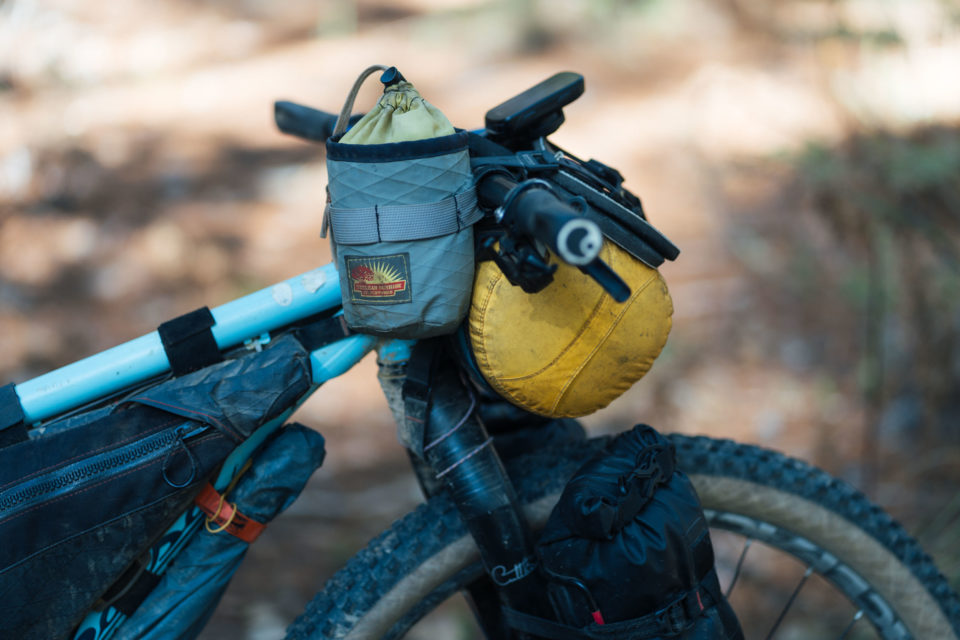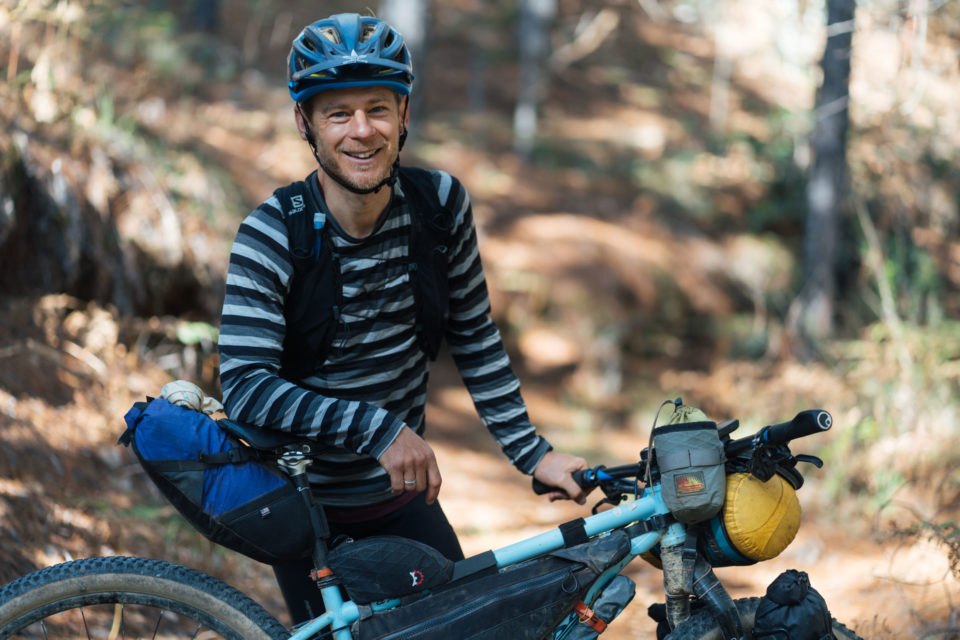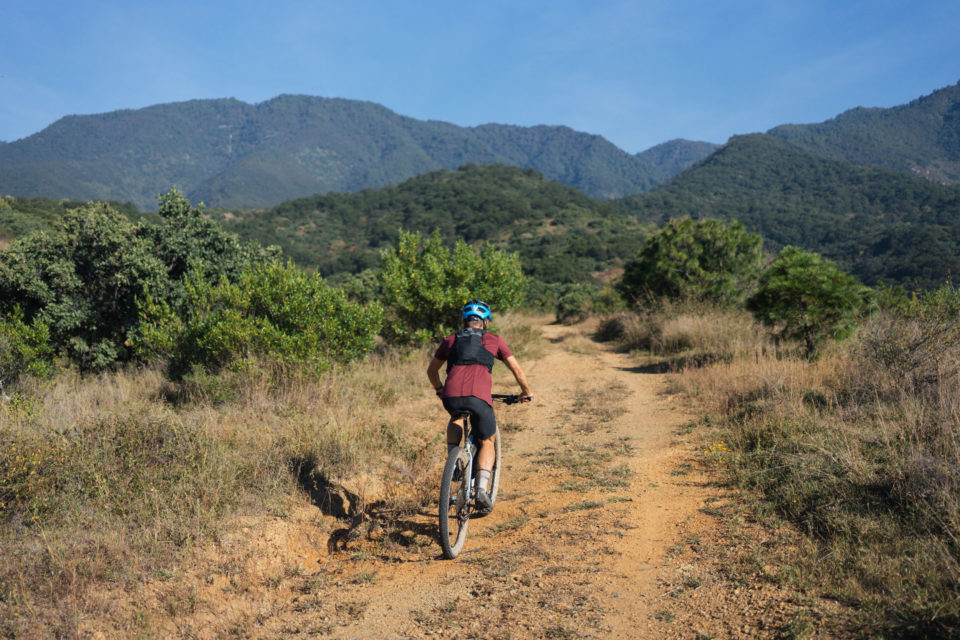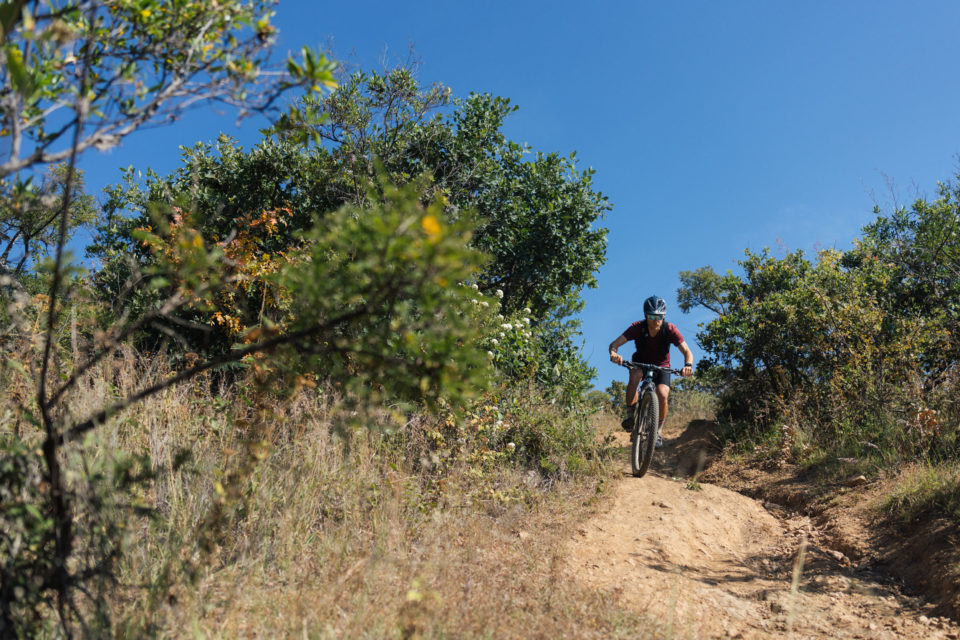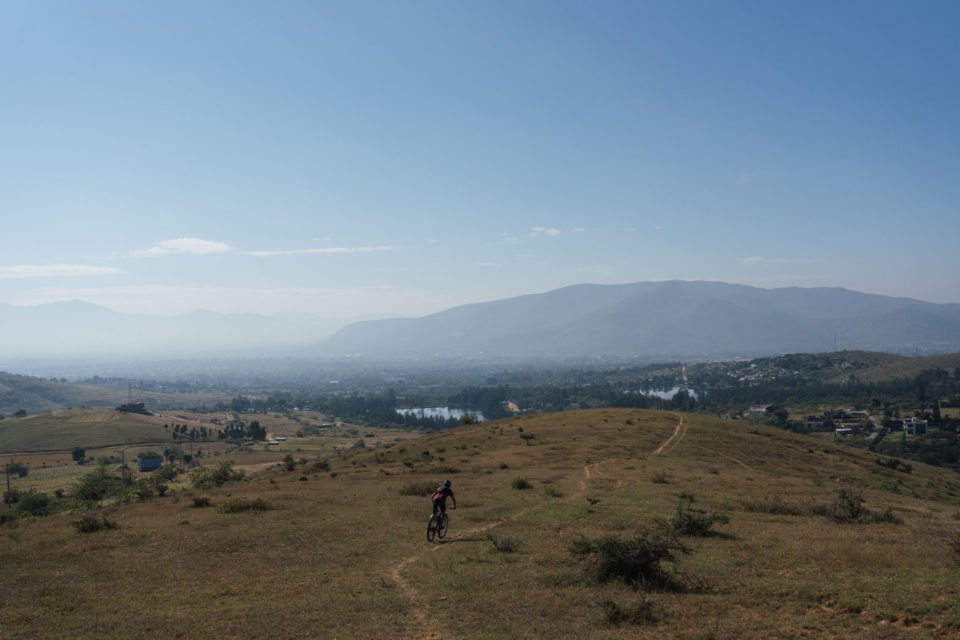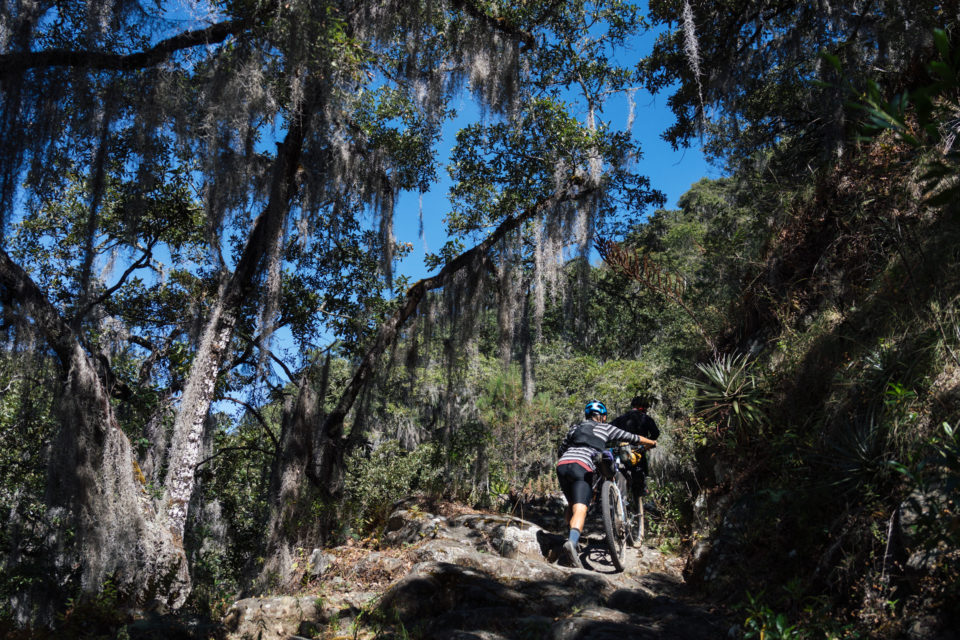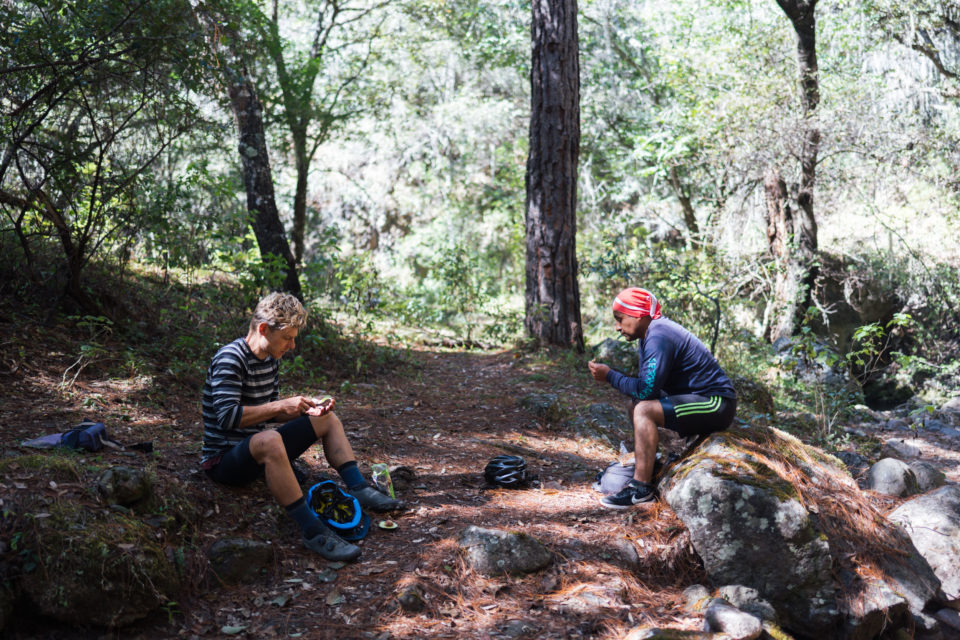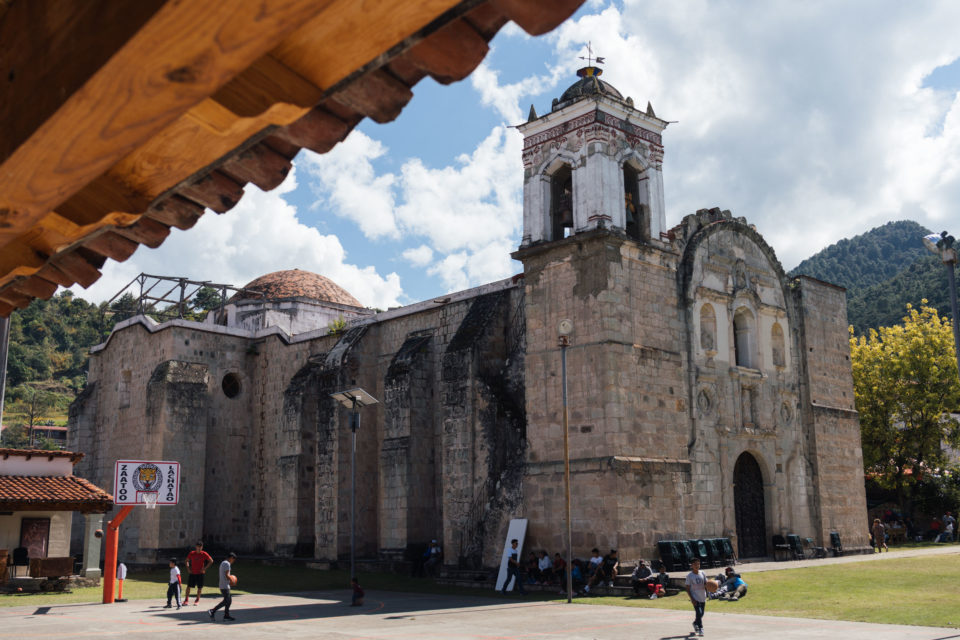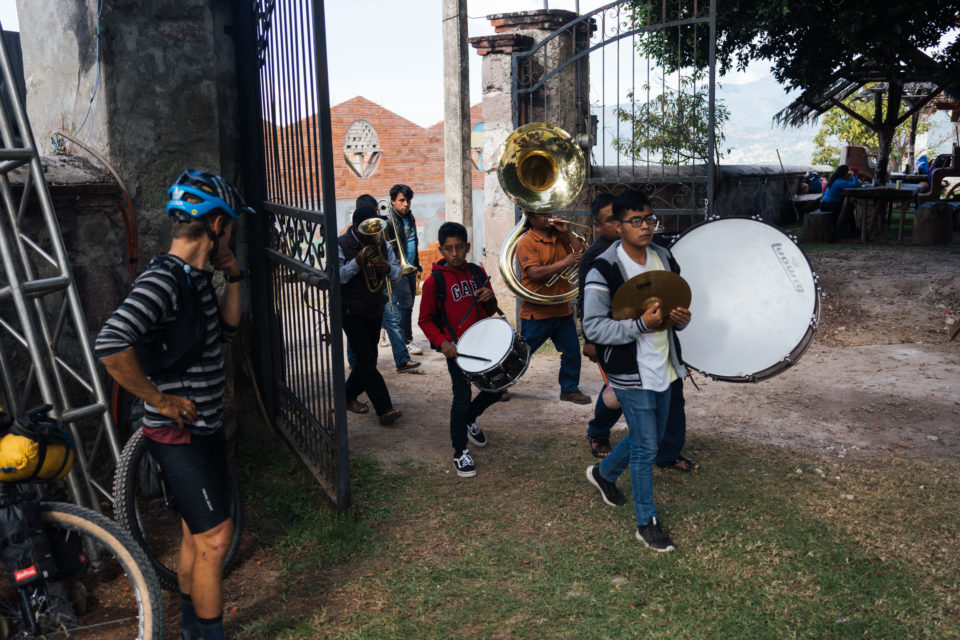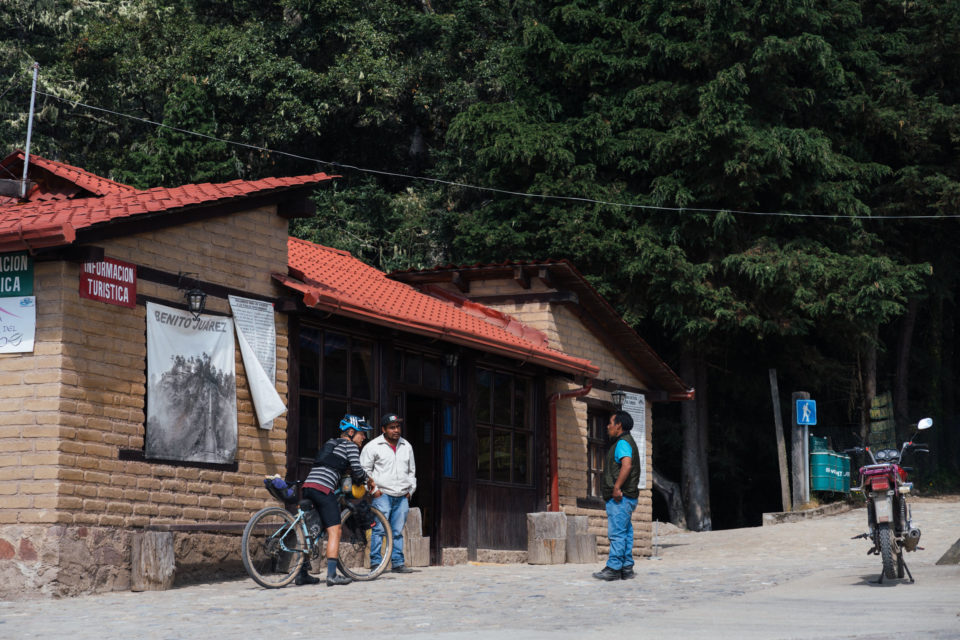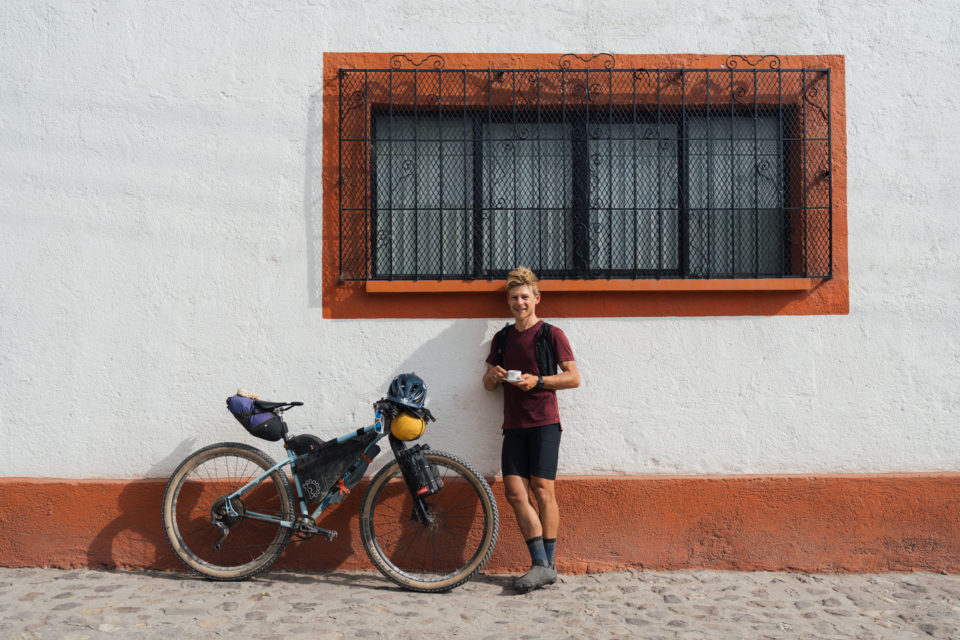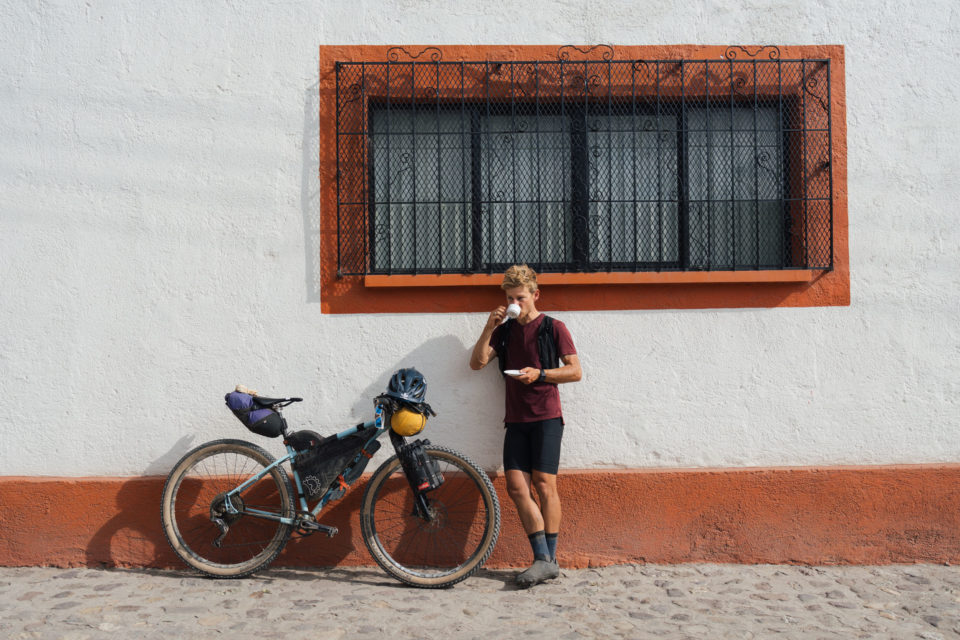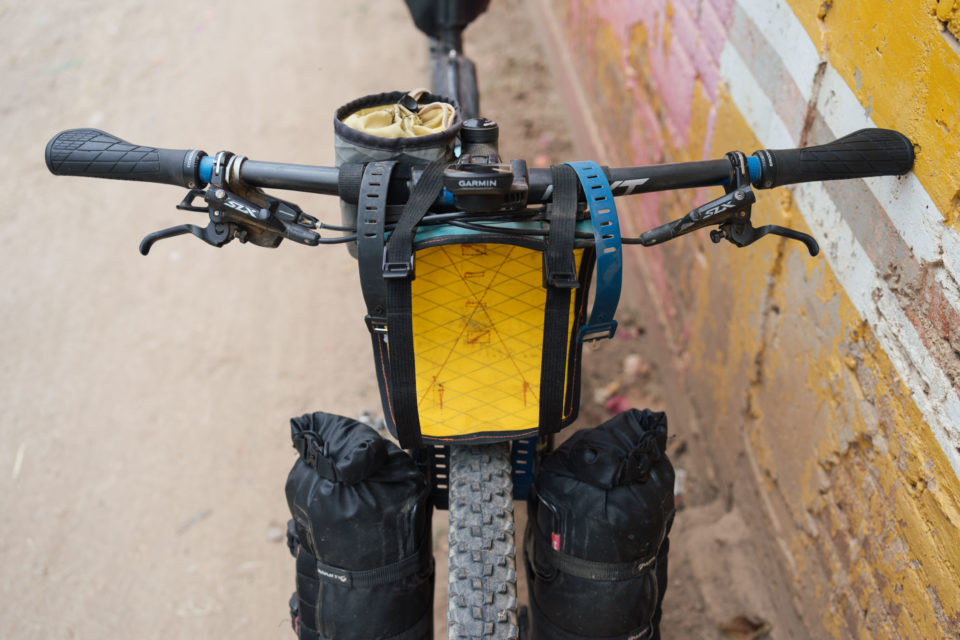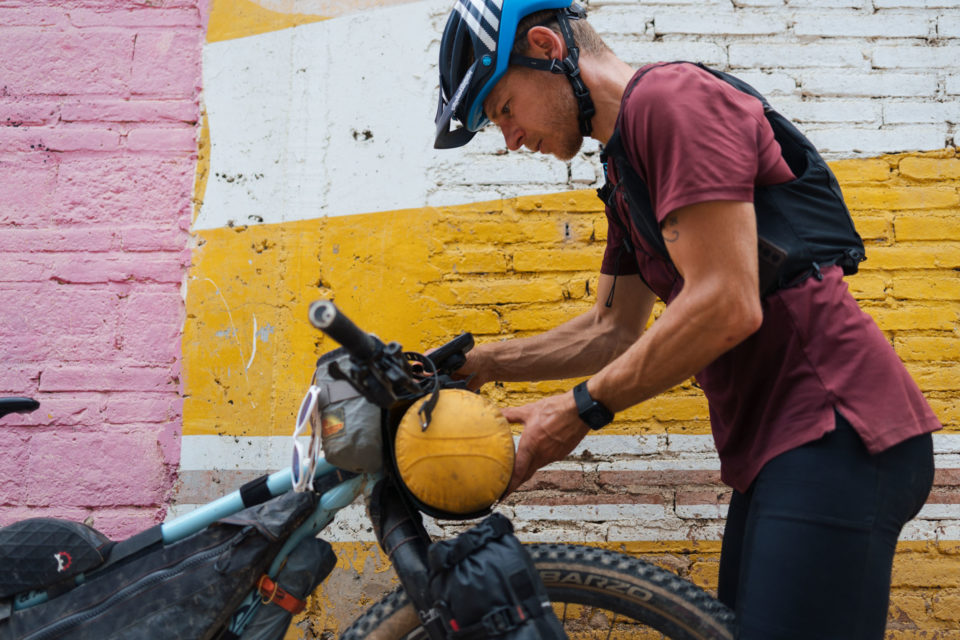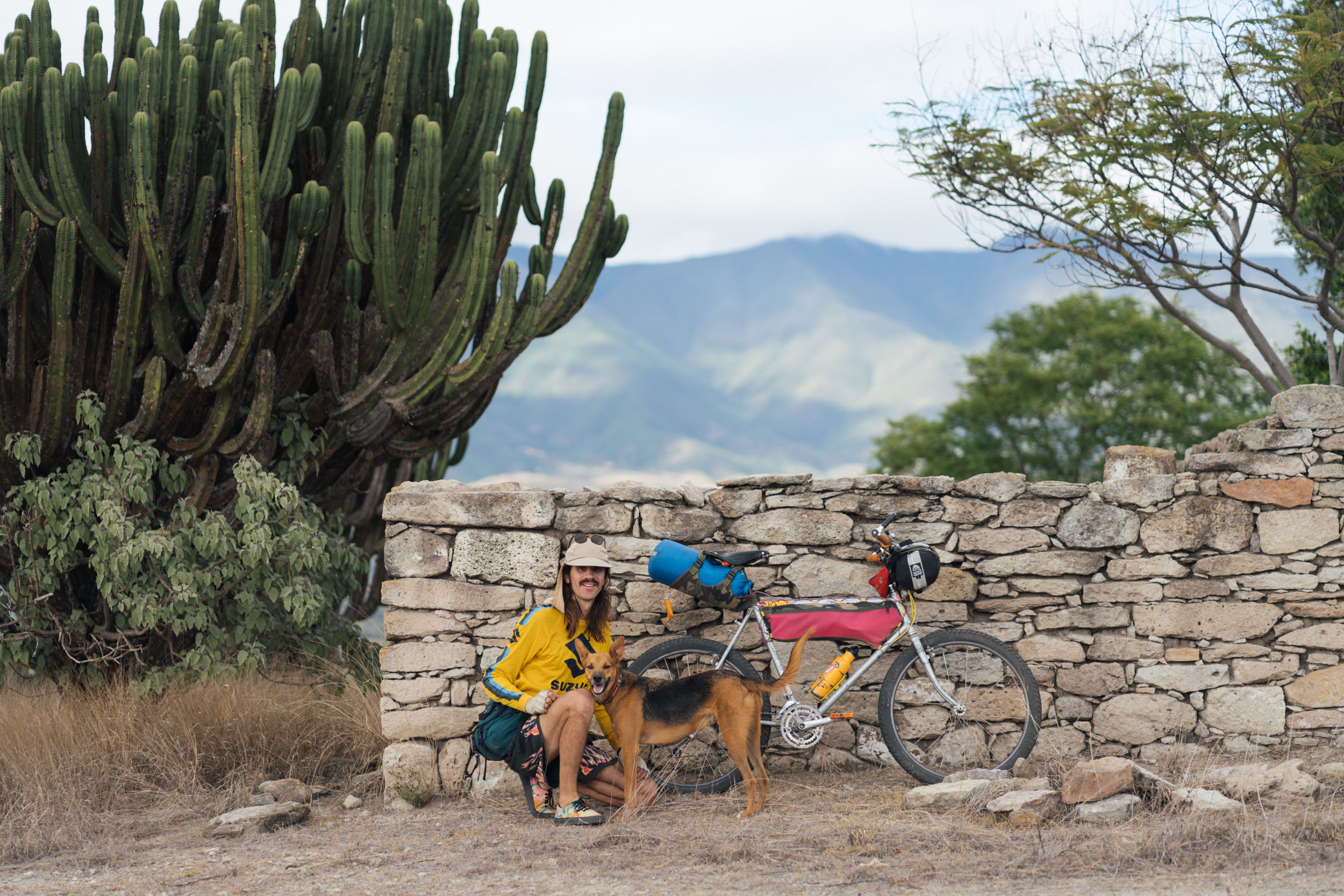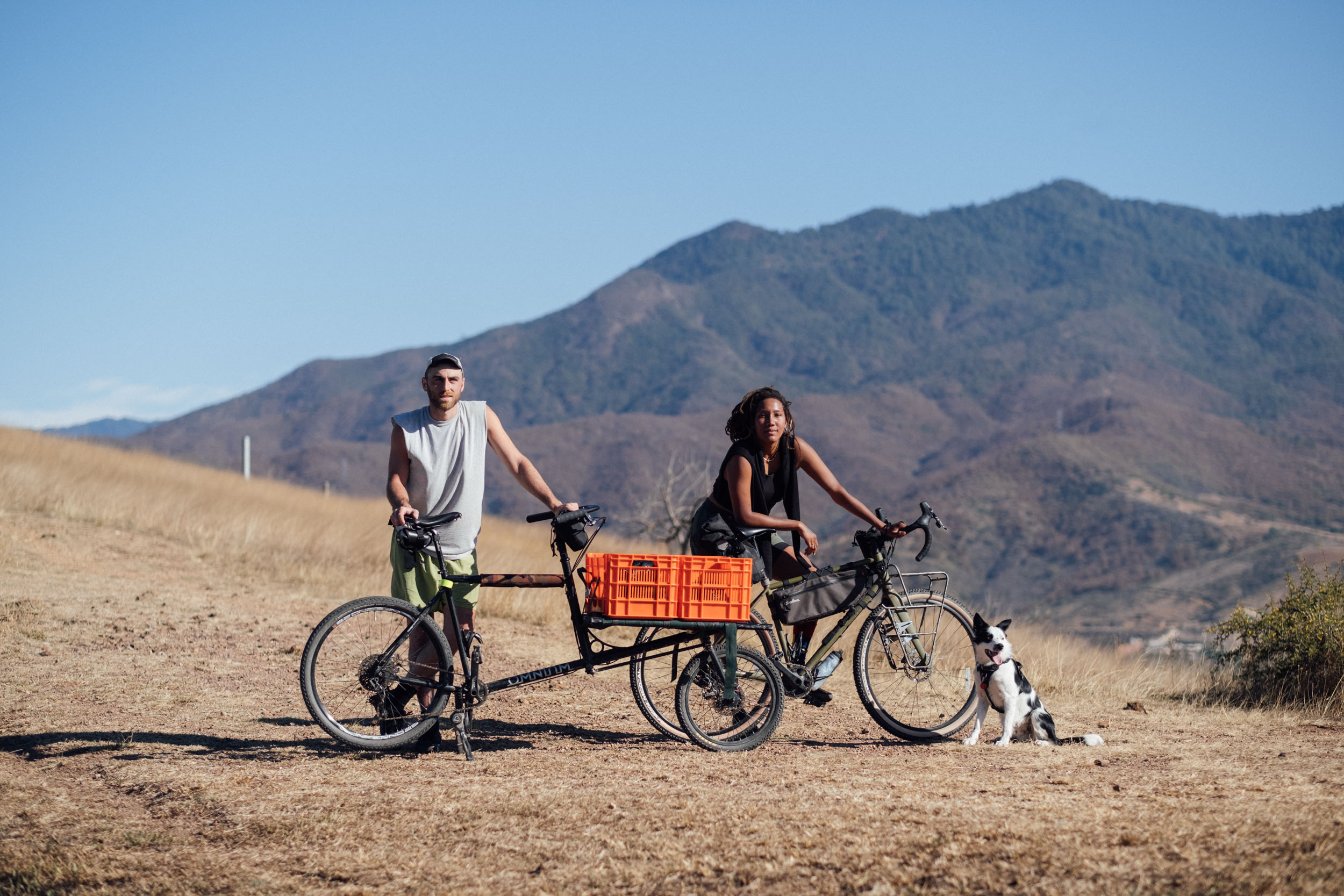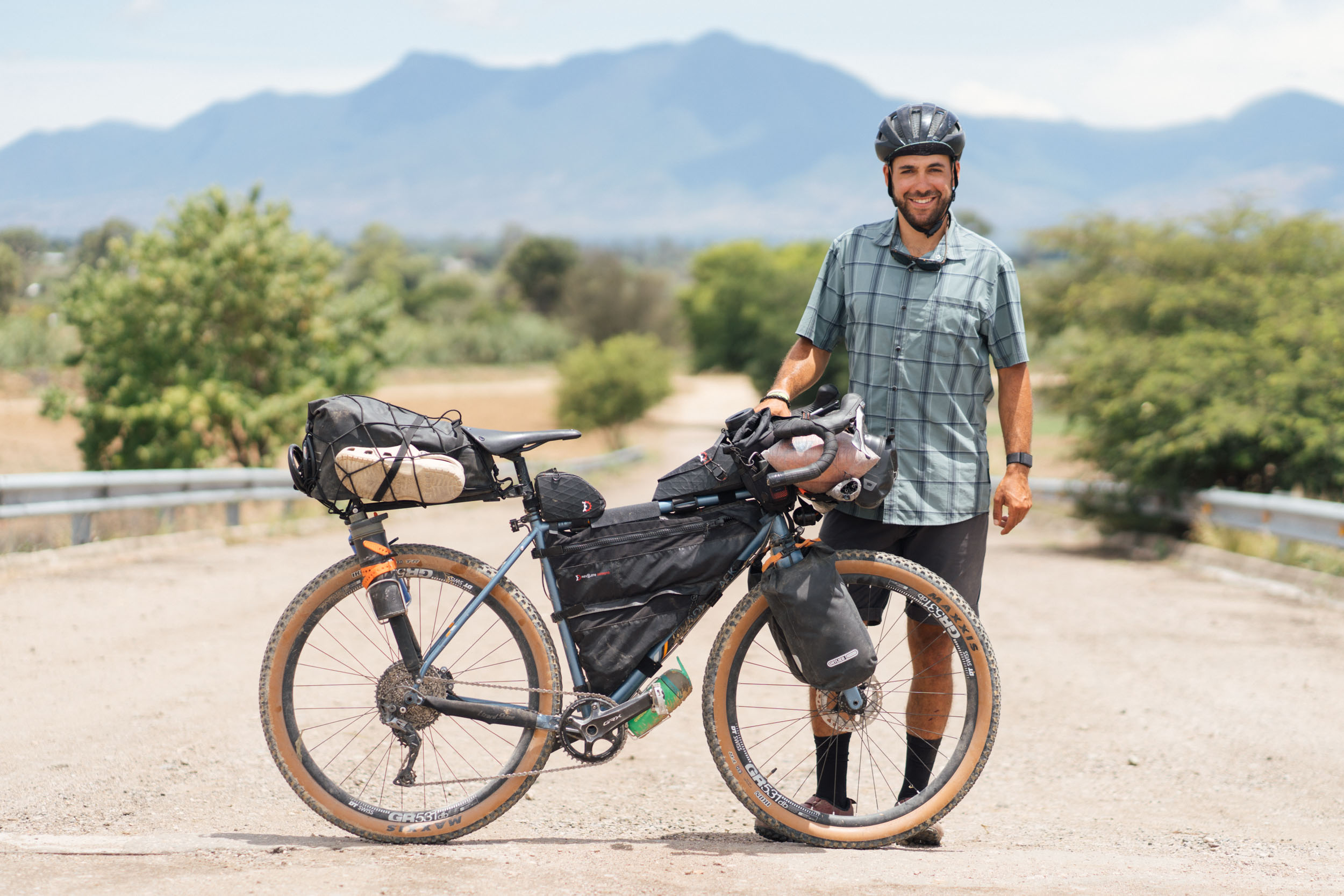Daniel and his Light and Lean, Third-hand Salsa El Mariachi
In a world that idolizes the latest and greatest, we deconstruct Daniel Schmidt’s lightweight Salsa El Mariachi bikepacking rig built solely with second-hand parts and winter specials. We talk about his guiding company, Ramble Bikepacking, his trail work through the Vermont Youth Conservation Corps, and how to avoid the perils of doomscrolling. And despite his “low-key competitiveness,” we discuss the value of allowing time to stop and interact with those around you…
PUBLISHED Jan 18, 2023
This ongoing, ad hoc series based around encounters with passing bikepackers could well be subtitled “Let’s go ride bikes, camp out, and ponder big thoughts.” And whilst it’s probably what I’d hope to be doing whether I was writing about it or not, putting together these posts is inevitably a catalyst to delve deeper into conversations, transcending cycling-specific topics into the more meaningful musings that lie beyond.
Over the course of a few weeks, Daniel Schmidt and I found time to enjoy a number of rides together – from techy Oaxacan singletrack outings and rural dirt loops to a couple of nights out in the Sierra Norte, where we scouted an extension to a favourite route, la Vuelta a Los Pueblos Mancomunados – which furnished us with ample time to talk about the intersection of bikes and life.
As you’ll find out, Daniel lives and breathes the outdoors, be it for work or for play, on two wheels or pair of skis. I was taken by his light and lean bikepacking setup, concocted thoughtfully from existing or affordable parts into a machine that would be as happy being raced as it was rambling. During our outings, we chatted about the nature of racing and bike touring, the wonders on the internet for connecting communities and its pitfalls for mental health, and the value of not always pushing out big days in the saddle – even if you’re perfectly capable of doing so. Read on for all this and more, as well as a breakdown of his setup’s potted history.
You’ve built up an impressive CV of bike touring over the last decade or more. Can you share a synopsis of your outdoors history and how much it’s become embedded in your life?
I grew up in northern Wisconsin, riding bikes and generally tearing around in a small forest wedged between my parent’s house and a highway. It wasn’t wilderness, but it felt wild. Bikepacking lights the same fire. Setting out on my bike, loaded up with food and a tent, reorients me to seeing the world as a wild and unknown place.
In 2008, my wife, Jen, and I planned our first big bike adventure — a six-month bike tour starting on the South Pacific island of Samoa. Our overloaded bikes flexed in all sorts of weird ways, and the heat was almost unbearable. I got an ear infection and flayed my thumb after putting my hand between my fork and wheel (yes, while riding — I had to swim with a condom on it). It was an awkward start. But we eventually figured some things out: use coconuts for drinking water, avoid mixing sunscreen and bike grease, and keep your food beyond the reach of wandering pigs. Once we got it, we loved it. Bike touring opened the way for spontaneity and chance encounters that come by moving slowly through out-of-the-way places.
It was an awkward start, but we eventually figured some things out: use coconuts for drinking water, avoid mixing sunscreen and bike grease, and keep your food beyond the reach of wandering pigs. We loved it.
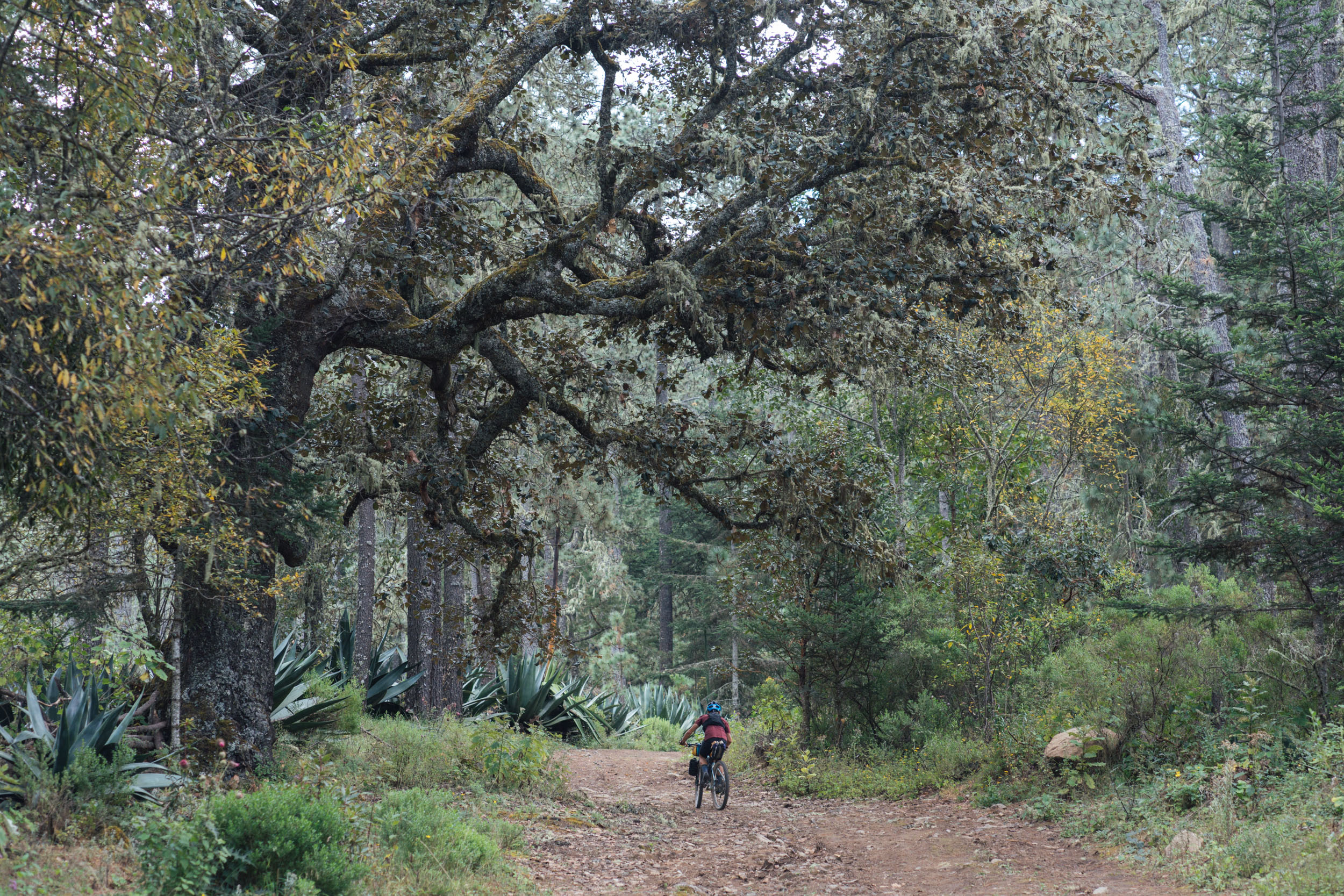
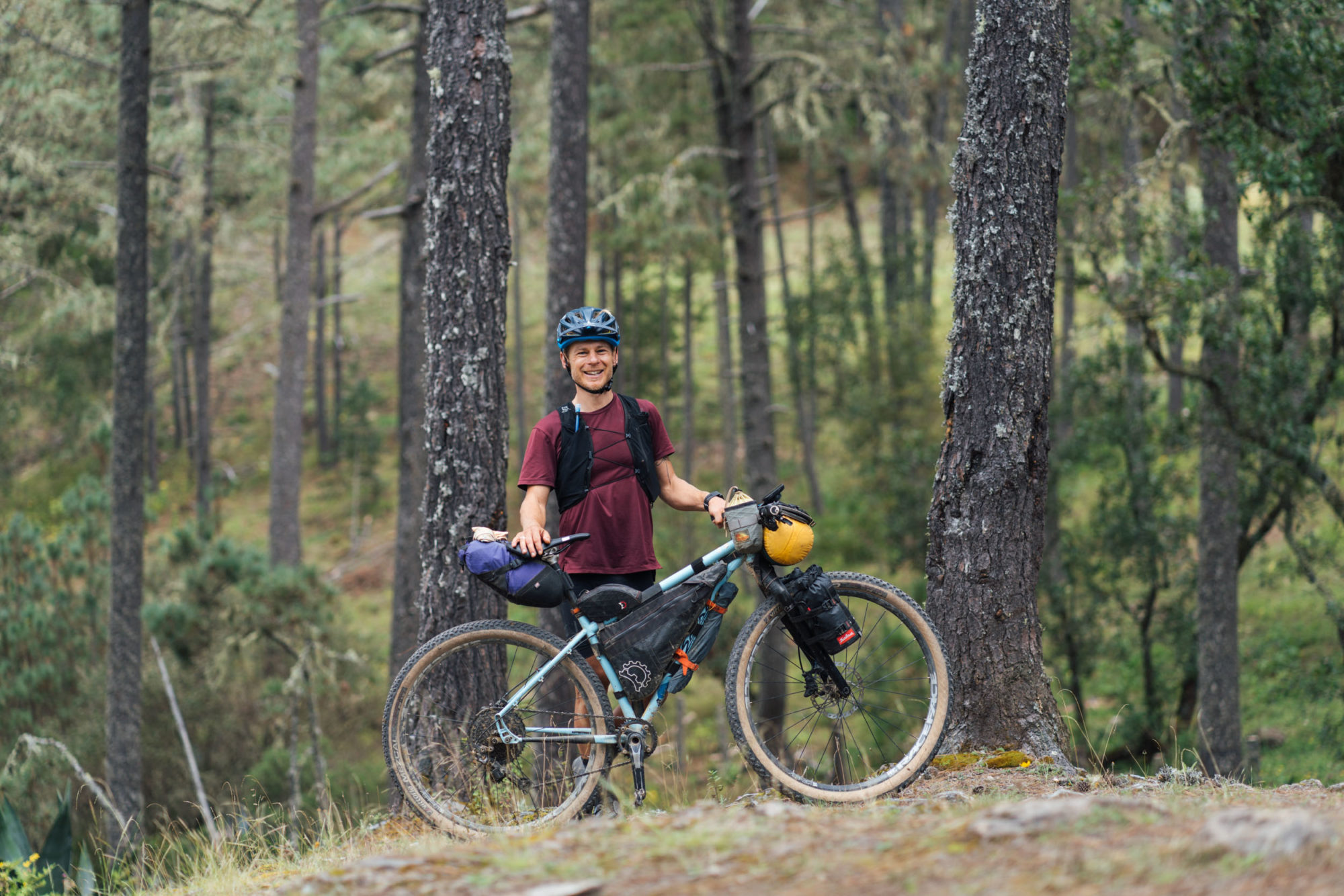
Fourteen years later, we’ve bikepacked in lots of weirdly wonderful places: Cyprus, Mississippi, Colombia, the Canary Islands, Peru, Mexico, North Dakota, Spain, and Newfoundland. Shortly after getting married, Jen and I adopted the mantra that we’re not settling down; we’re gearing up! To that end, we’ve made it a priority to take large chunks of time off every few years to travel. At first, people would say, “Do it while you’re young.” But having solidly entered middle age, a balance of time away and time at home in Vermont has become the cadence of our life.
We’ve also had some interesting adventures off the bike. In 2008, Jen and I lived on a sailboat in the San Francisco Bay. In 2014, we lived out of a Ford Focus station wagon in our version of a #vanlife trip around North America. In 2019, we kicked around eastern Washington, climbing and stargazing with Jen’s dad. On our North America tour, deep into the Canadian Maritimes, we spent several days tent camping in a sea of RVs. Our neighbors made it their mission to provide us with all the creature comforts that our tent lacked. We were invited into palatial RVs and served cocktails, given house keys so that we would have a dry bed and warm shower, and gifted moose meat and cranberry liqueur, anonymously left outside of our tent fly. Being vulnerable to the things that walls can keep at bay, like nosy strangers and thunderstorms, has a flip side of opening up a world of new friends and moose meat.
Bikepacking Newfoundland
One of these trips was to Newfoundland, which is a part of the new Eastern Divide Trail. Please tell us a little about touring in Newfoundland in those early, pre-EDT days.
I put Newfoundland on the list of places that I’ve really connected with; I would add Colombia, Oaxaca, and Vermont as well. All these places, but Newfoundland especially, have a few things in common: epic landscapes, friendly rural communities, and lots of opportunities for exploring.
The newly published Boreal route — part of the Eastern Divide Trail — mostly follows the T-Railway, an old railbed that runs across Newfoundland. For those riding the entire Eastern Divide, the T-Railway is a wonderful and rugged way to traverse the island. For those who have more time and an inclination to explore, the T-Railway can be used as an artery for riding further afield.
In 2015, Jen and I had a month to ride and, with a paper map in hand, we sought out far-flung communities that dot Newfoundland’s weather-beaten coast. In the north, we rode to the delightfully named Twillingate to scope icebergs and humpback whales. In the east, we rode through sand dunes full of wild strawberries on the French islands of St. Pierre and Miquelon. In the south, we completed our month-long loop by linking up passenger ferries between dead-end roads and remote fishing villages.
In the final days of our trip, we pedaled along the Annieopsquotch Mountains, a remote range with few people. So, we were surprised when a couple of retirees ran out of their cabin waving their arms and shouting at us. We sped toward them thinking there was an emergency. No emergency. Just some Newfies who had spent the morning harvesting wild blueberries and wanted to share the bounty with us. We relaxed in their living room, chatting and stuffing ourselves on tiny blueberries and whipped cream. Just when we were about to burst, they sent us on our way with bags of more blueberries. The thing with Newfoundland is that this type of friendliness happened all the time. I’ve never felt so taken care of. People were constantly flagging us down to see if we needed anything. Ice cubes for our water? Camping advice? More moose meat? Newfoundland’s dramatic landscapes and remote roads are well worth the trip, but the amazingly sweet people make it one of my favorite destinations. Malcom at Slow Biker gave us great route advice and you can our guest post on his blog here here.
In addition to being your love of bike touring, being part of a racing community seems like it also plays a big role for you. Can you expand on that?
I’m low-key competitive. I love the feeling of burning legs and lungs during a hard effort. But what keeps me coming back to racing is the sense of camaraderie I feel after spending a long time doing a difficult thing with a group of people who are just as exhausted as I am. That community is easy to find in Vermont. Our one-stoplight town, Richmond, is an excellent home base for gravel racing, XC mountain bike racing, and XC ski racing.
I’ve done a lot of single-day events, but the Coconino 250 in Arizona was my first bikepacking race. It has a community-oriented format where racers camp at designated sites. Race times start when you leave camp and stop when you arrive at the next camp. In the evenings everyone pitches tents together, swapping stories from the day and sharing Strava stats. I know that Strava can seem like data-bragging for obsessive endurance types, but I love it. The connections I’ve made with riders, from the Coconino 250 and elsewhere, continue on my Strava feed. More than the next KOM, that ever-expanding circle of friends keeps me excited about racing.
Your day-to-day works keeps you outdoors too, right? Tell us about the Vermont Youth Conservation Corps and the trails you build.
I work for the Vermont Youth Conservation Corps (VYCC), and much of what we do is centered around young people working together in the outdoors on projects that matter. We do a lot of things, including growing vegetables for families facing food insecurity, improving water quality, and helping to manage forests and wildlife habitat. But a big part of our organization is focused on trails and trail access. We even build mountain bike trails! The common thread to all these projects is that they happen outdoors — rain, mud, bugs and all.
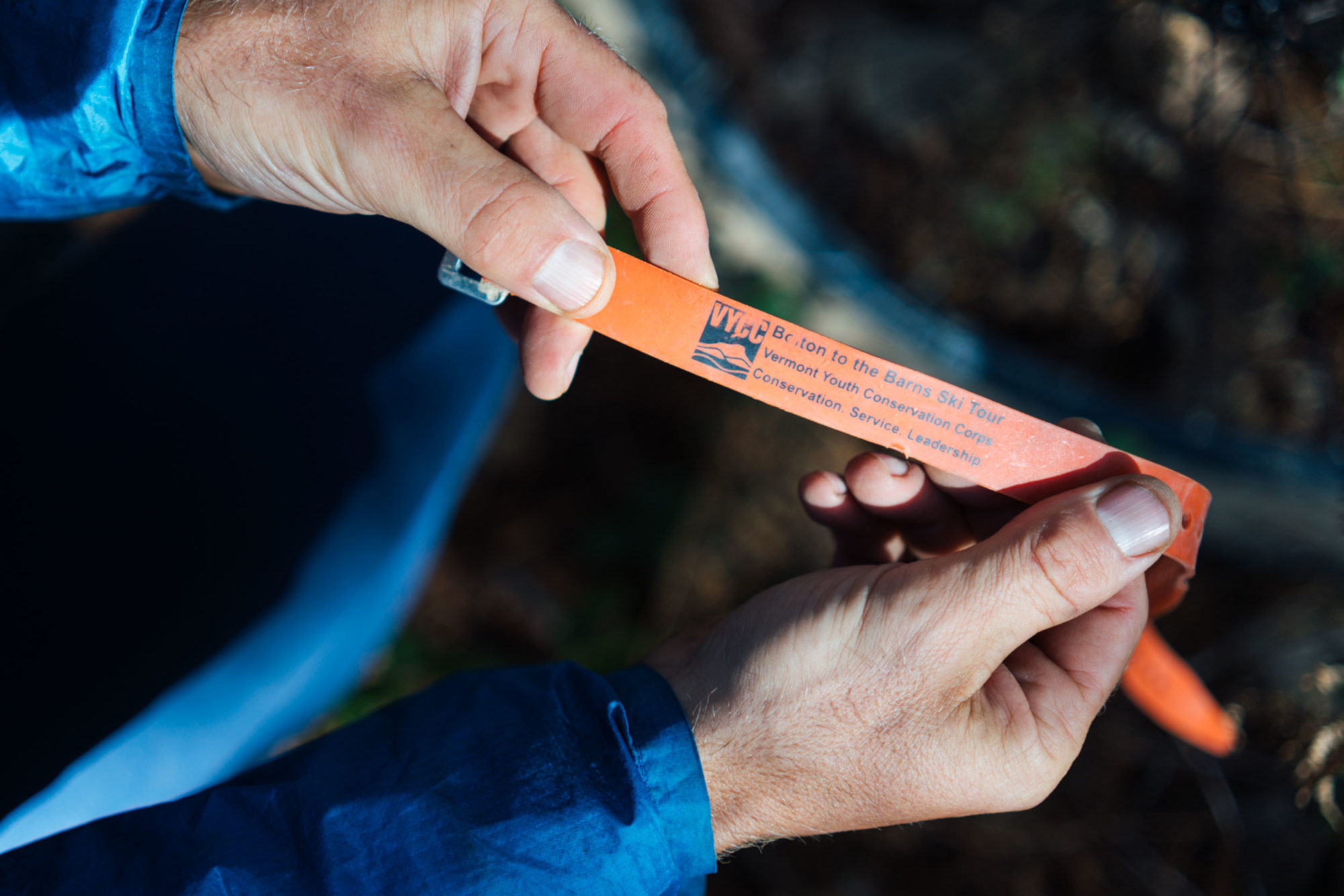
We’re lucky to have a huge diversity of trails in Vermont that run the length of the state that constantly need work. The OG of hiking trails, The Long Trail, is perhaps the most iconic. But we also have The Catamount Trail for those wanting to ski the length of Vermont. And for riders, there are a number of long-distance gravel routes, including the Super 8 and the VTXL. In the works is an end-to-end mountain bike trail called the Velomont Trail.
Trail building on this scale is only possible because organizations like VYCC, the Green Mountain Club, and Northwoods Stewardship Center hire hundreds of young people to live, work, and breathe trails for months on end. Crews camp in remote locations, cooking in makeshift kitchens and living out of tents, while spending their days swinging a McCleod or hauling on a rock bar so that others can get outside and enjoy the Green Mountains.
During our campout, we discussed about the pros and cons of the internet in our lives, and the associated devices that we now permaplug ourselves into. The idea of assigning only very intentional access to phones and social media during these extended work stints in the forest is particularly interesting. How does it work out in the field, and how does that translate into your homelife?
The idea of outdoor education, and outdoor experiences in general, and screens is endlessly fascinating. Vermont is pretty rural and has bad cell service, so it’s like the whole state is conspiring to keep you off screens. Vermont bikepacking trips often mean going offline. The same goes for the VYCC crews that spend two to six months working and living in the backcountry. When it comes to the challenges of backcountry living — including digging a hole for your poop, hiding your food from bears, and bathing in an icy river — crewmembers say disconnecting from phones is often the hardest part.
In both my work and my personal life, I want to be intentional about the role screens play. At VYCC, the young people on our crews have the opportunity to put their phones away during the week, checking in with their families and friends on weekends, which really helps to focus on the people and place that’s in front of them. This shift, whether for hours or weeks, can have a big impact on people who grew up with constant access to the internet. We get feedback that the purposely putting away phones is a relief – and I agree, it’s exhausting for one’s attention to be pulled in so many different directions. The ability to do physical work with a small group of people outdoors allows for a type of focus that feels human.
When it comes to the challenges of backcountry living — including digging a hole for your poop, hiding your food from bears, and bathing in an icy river — disconnecting from phones is often the hardest part.
Not that I don’t value a little screen time now and then. Back in my early bikepacking days, I was a loyal reader of Cass’ While Out Riding blog. His pictures and stories served as inspiration for many of our trips. I spent hours reading through trip reports and dreaming of riding through the high Andes. Which made it all the more magical when I randomly bumped into Cass in a cafe in La Paz, Bolivia. I recognized him, and all the bikepacking stickers on his computer, and we had a lovely chat about the Cordillera Real — a mountain range Cass had been traversing on bike and I was about to traverse on foot.
All this to say, our late-night campout conversation got me thinking about my own screen use while bikepacking. My phone has become an important part of every trip. It’s my map, my camera, my music, and my connection to friends and family. It’s also an easy distraction when waiting for food to arrive at the comedor or when tucked into a sleeping bag. I do think the minutes and hours add up and it’s important, for me at least, to understand the price of things. There is a cost to giving my attention to a screen.
I’m a fan of apps that show how much time I’ve spent on a particular website during the day. I know I can waste serious time scrolling for used bike gear. That little clock ticking in the corner of my screen, counting the minutes I’ve been clicking on Craigslist ads, is excellent motivation for shutting down my computer. I use the Digital Wellbeing app for setting daily limits on apps, such as five minutes a day for Instagram, which allows me to enjoy that scroll over morning coffee and, when the app locks, go about my day without feeling the pull to check in again. The analog version, tossing my phone in a drawer for the evening, works as well. If I do find myself endlessly scrolling, I like to think of Mary Oliver shouting, “What is it you plan to do with your one wild and precious life?!” Then it’s time to call a friend, grab my bike, and head out for a ride.
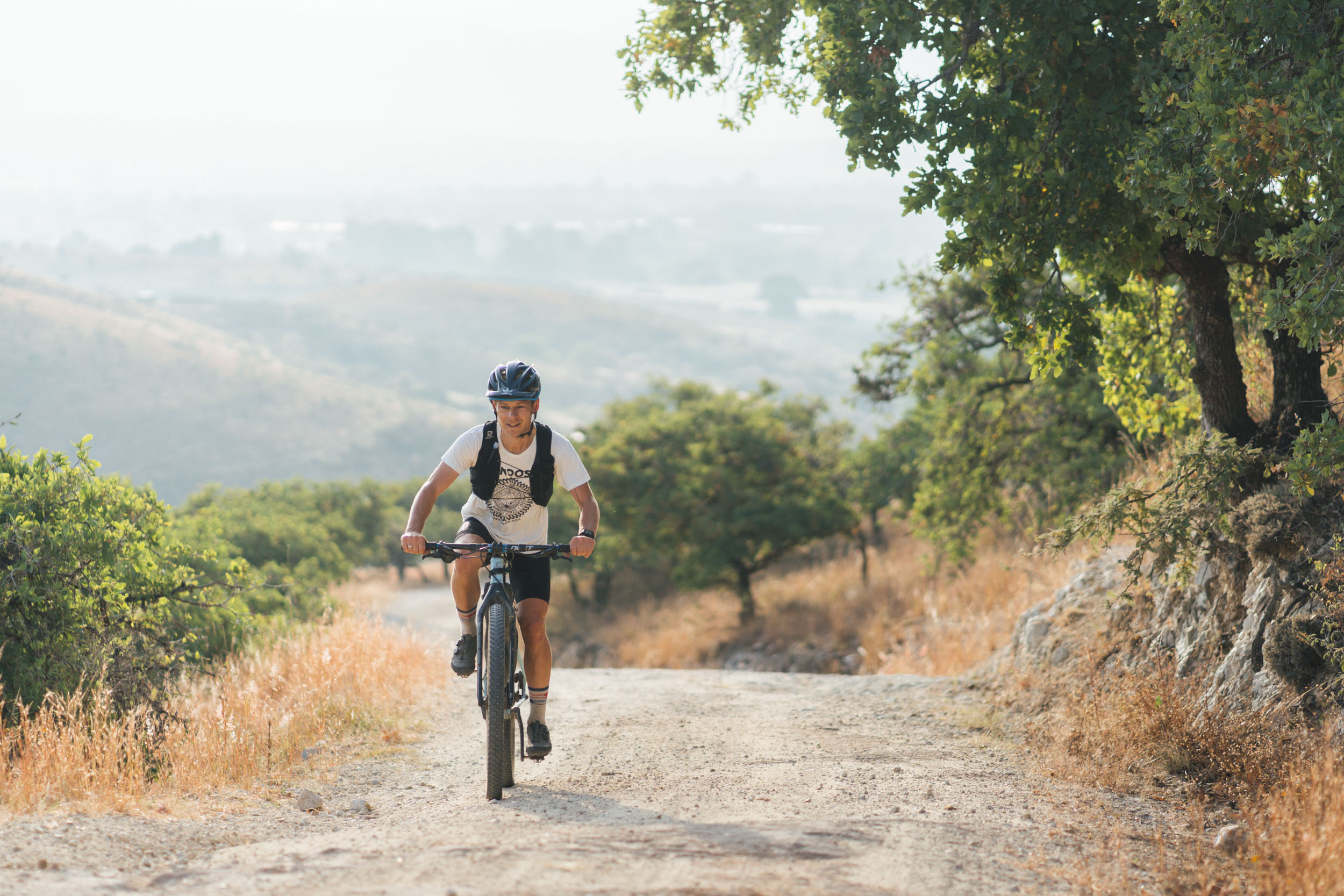

Ramble Bikepacking
What’s the idea behind your local guiding company, Ramble Bikepacking? I love the name, by the way!
Thanks! BIKEPACKING.com was already taken so we went with the second best name :) Ramble grew out of years spent learning Vermont trails and backroads by bike. Back in 2009, my good friend Chase and I started exploring Vermont’s class 4 roads, trails and doubletrack with beat-up ‘cross bikes and panniers. After dozens of bikepacking trips together, we’ve gathered a collection of amazing dirt routes, camp spots, and swimming holes. Last year, we created Ramble in the spirit of sharing the very best of the mountains and forests we call home.
Our trips are about three days in length, designed to highlight one Vermont region and maximise fun. Here, that means some combination of swimming holes, buttery smooth trails, creemees, and dirt roads with views. The ride is all about exploring Vermont and connecting with others. There are no points for hill sprints (though we can tell you where the Strava segments are if you want to test your mettle). Off the bike, we have amazing camp spots created in partnership with private landowners. Each spot is unique to Ramble. Everyone carries their own gear, but we provide breakfast and dinner, which ends up being quite a feast after a full day of riding. Evenings wind down with a campfire, drinks from local breweries, and maybe a quick dip in the lake.
In terms of vibe, the Ramble moodboard would have lots of maple trees, snack-filled frame bags, and sock tan lines. Although we have scheduled trips on our website, we also create custom trips for group rides. Get in touch if you would like to know more.

And now, let’s talk bikes! Buying the latest and greatest doesn’t seem to motivate you, and judging by your bikepacking rig and setup, you’re happy hunting around for secondhand deals, checking in with your local bike co-op, and scoring some winter specials. Please deconstruct your build for us.
I’ve had a bunch of different touring bikes, including ‘cross bikes, an early 2000s Stumpjumper, a Surly Troll and a second Surly Troll. My wife now rides one of the Trolls, and the other I sold locally and I see it (and the new owner) cruising around Burlington every now and then. Vermont bike shops like the Old Spokes Home and Outdoor Gear Exchange make it easy to get used parts for reimagining old frames. For the last few years, I’ve been touring on a 2015 Salsa El Mariachi hardtail, and I’m increasingly excited about it. I bought it off a friend in 2019 and set it up with flat bars, 29 x 2.4-inch tires, and a rigid carbon fork. Cass got it right when he called the bike “light and lean.” It’s plenty rugged for most surfaces but is nimble enough that I never feel sluggish. I also run a pretty minimal setup, which is easy to do in places like Oaxaca and Vermont where food and water are plentiful.
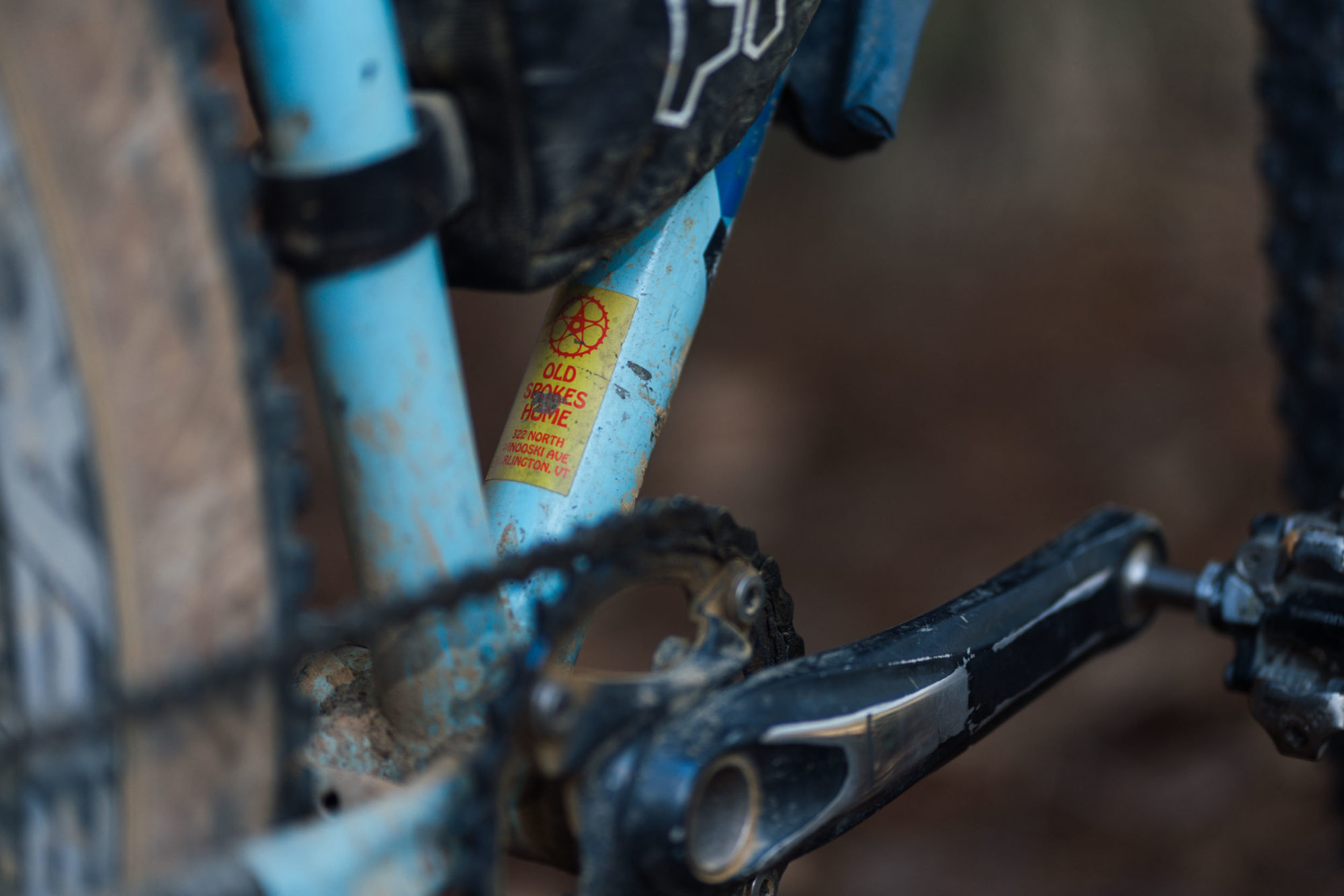
Frame: 2015 Salsa El Mariachi. Cost: $250 History: Bought from a good friend who found it at Old Spokes Home in Burlington, Vermont.
Fork: Older Salsa Cutthroat. Cost: $70 used. History: I snagged this gem off eBay, and I think it was so cheap because of the non-boost (i.e. “outdated”) specs. Being a carbon fork and steerer, it’s incredibly light and playful.
Wheelset: RaceFace Aeffect. Cost: $150 used. History: I kind of love underbiking and will run 2.4-inch tires on even the chunkiest terrain. So, making do with a non-boost (142) frame and wheelset (and narrower tires) was an easy compromise. Plus, there was an abundance of cheap wheelsets as everyone made the jump to boost spacing.
Drivetrain: Shimano SLX 1×11. Cost: $400(ish) History: This is a workhorse drivetrain and, while I wouldn’t mind having one more cog in my cassette, I think a 1 x 11 is completely sufficient for 95% of my riding.The crankset was pulled off an old bike and in 2022, and I replaced the rear derailleur, chain, bottom bracket, cassette and chainring all for $240.
Steering: Salsa stem, RaceFace carbon flat bar, Ergon Marathon grips, Cane Creek headset. Cost: $370. History: I love running a flat bar. I know that the drop bar looks sexier in photos but I prefer the versatility and stability of running a flat bar. I feel more confident on trails and chunky terrain while still feeling relatively efficient when the terrain smooths out.
Butt: Specialized Phenom saddle, very old Nashbar seatpost. Cost: $160. History: Bought new, the Specialized Phenom saddle is by far and away the best saddle I’ve ever used, and you can buy the Comp version for $140. It’s worth every penny. I would go as far as saying that I’d pay any amount of money for one! I don’t know what type of fairy dust they put inside, but it’s pure magic. I bought the seatpost used from a guy on Craigslist in San Francisco.
Rubber: Vittoria Mezcal rear, Vittoria Barzo front – 29 x 2.35. Cost: $100 History: Bought in an end-of-year sale. I own a full-suspension mountain bike and have been in the habit of moving my tires from that bike to my El Mariachi when they’re showing signs of significant wear. Most of my touring involves some singletrack but not enough to warrant pristine rubber. It’s also amazing how long a set of tires lasts if you’re willing to ride it down to nubs.
Bill: The costs listed are a close approximation to what I’ve paid over the last few years. I bought a lot of stuff used or got it on discount in winter. Still, I think it’s entirely possible to put together a “light and lean” bike and not spend a small fortune. All told, this iteration of my El Mariachi cost around $1,500. The mix of reliable components and a no-frills frame and wheelset worked really well for both bikepacking and trail riding in Oaxaca. The El Mariachi is close to ideal, and there’s nothing I would change, except perhaps a 30T chainring and a slightly larger volume front tire.
It even transforms into a “wintry mix” El Mariachi, set up as a single speed for frozen dirt roads. Pulling off the cassette and derailleur saves them from the salt and corrosion typical of a Vermont winter.

And lastly, as this is your second trip to Oaxaca, I take it you like it here! Can you describe Oaxacan terrain in Vermont-parlance? Also, we talked about the value of slowing down on tour and resisting the urge to blaze through, which seems especially important in a people-orientated culture like the Oaxacan one. As someone who races and rides big miles, what are your thoughts on this?
While on the San José del Pacífico route, I spent the better part of a morning bumping along an old logging road high in the Sierra Madre. Hopping over eroded gullies and around football-sized rocks, I had the sensation of riding in the Green Mountains of Vermont. Both Oaxaca and Vermont have this satisfying mix of smooth dirt roads, rough and chunky roads/doubletrack and a bit of singletrack. For me, the crema of riding is this middle category, the rough and chunky. In Vermont, these types of “roads” are referred to as Class 4. They can be rooty, rocky, muddy or all of the above, and they add the perfect amount of spice to any ride. Oaxaca has loads of Class 4-ish roads. And I’ve run across more than a few Vermonters who’ve chosen to spend their winter riding in Oaxaca.
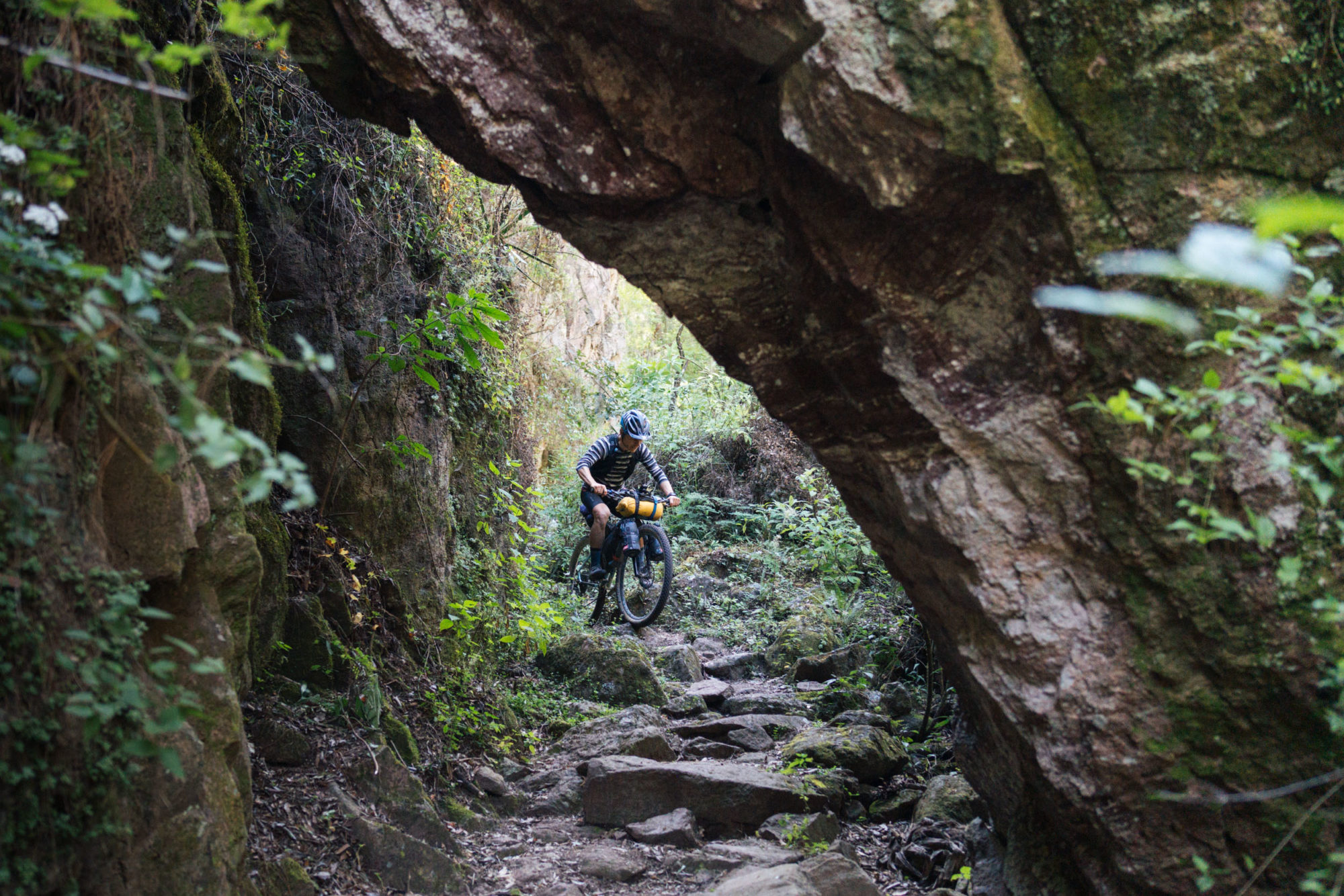
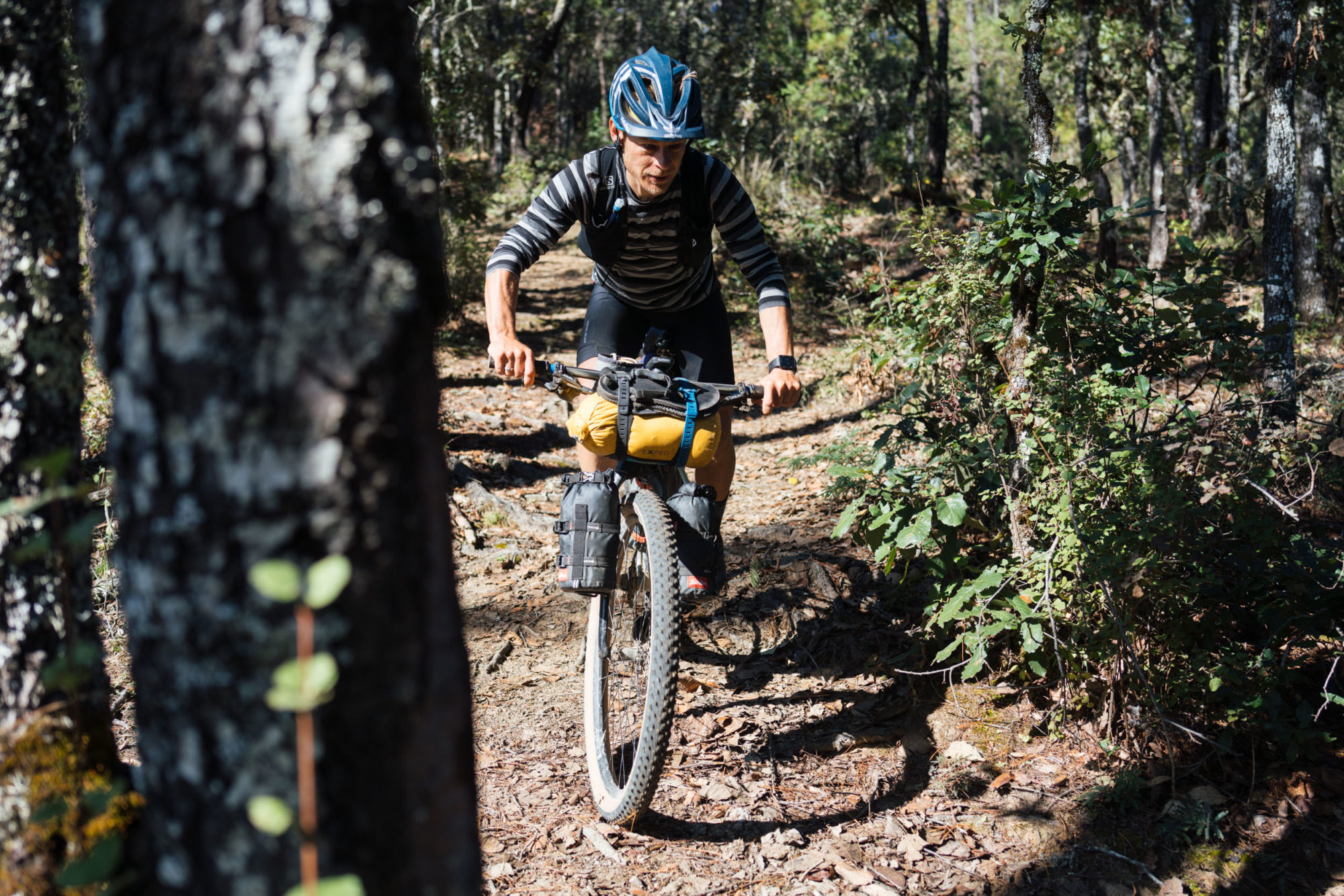
What Vermont doesn’t have is a tropical coastline known for excellent surfing. Riding from Oaxaca to the coast to catch some waves was a huge draw for me. I was smitten with the idea of riding for days just to go surfing. I rode up and over the Sierra Madre, eventually topping out in an electrical storm(!), before a white-knuckle descent to the coast. Before reaching the sandy beaches of Puerto Escondido, I met a lovely couple who had recently settled down in Puerto Escondido, a few blocks from one of Mexico’s most iconic waves. They graciously offered to let me stay at their house and started texting friends who might have an extra surfboard. A few hours later, I was paddling out into head-high waves and feeling overwhelmed with gratitude that things had fallen into place.
These chance encounters were not entirely by coincidence. By traveling solo, I hoped to create daily opportunities for conversation and connection. Each day I made time to stop in town, buy a paleta (a mexican popsicle) and strike up a conversation. In San Dionisio Ocotepec, I met a fellow mountain biker who was also working on his Spanish — he spoke Zapoteco as a first language. He eyeballed my bike for a good 15 minutes before politely asking if he could take it for a spin around the plaza. We squeezed brakes and pinched tires, compared trail notes and gear, and spent the afternoon chatting in the shade. In Oaxaca, these small moments of connection felt easy to come by and worth every pedal stroke. I will definitely be returning to bikepack in Oaxaca — you will find me sitting in the plaza, snacking on a paleta, waiting for someone to say hello.
He eyeballed my bike for a good 15 minutes before politely asking if he could take it for a spin around the plaza. We squeezed brakes and pinched tires, compared trail notes and gear, and spent the afternoon just chatting in the shade.
Salsa Mariachi Highlights
- Frame 2015 Salsa El Mariachi
- Fork Salsa Cutthroat carbon
- Headset Cane Creek
- Stem Salsa
- Handlebar Race Face Next carbon bars
- Grips Ergon Marathon grips
- Brakes Shimano SLX
- Rotors Avid 6 bolt
- Shifter Shimano SLX 1×11
- Rear derailleur Shimano XT
- Crank and chainring Shimano Deore, Race Face 32t
- Cassette Shimano SLX 11 speed, 11-46
- Chain Shimano
- Front hub Race Face Aeffect
- Rear hub Race Face Aeffect
- Spokes standard
- Rims Race Face Aeffect 29x25mm internal width
- Tires Vittoria Barzo front, Mezcal rear 29×2.35
- Seatpost Nashbar
- Saddle Specialized Phenom
- Pedals Shimano SPD
In terms of bags, I have a Revelate Ranger framebag, Salsa’s Anthing Bags, Rockgeists’ Foxglove seatbag, Revelate’s Jerrycan top tube bag, and Nuclear Sunrise’s feed bbag.
My good friend, Stephen Cohen, makes awesome bikepacking bags and backpacks under the name Cruddy Pockets. My handlebar bag harness was a prototype but it worked so well that I can’t imagine using anything else. It’s simple and perfectly functional and still kicking after two years of hard use.
To find out more about guided bikepacking trips in Vermont, visit the website of Ramble Bikepacking. You can find his full packlist here.
Related Content
Make sure to dig into these related articles for more info...
FILED IN (CATEGORIES & TAGS)
Rider & Rig
Please keep the conversation civil, constructive, and inclusive, or your comment will be removed.








